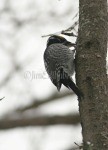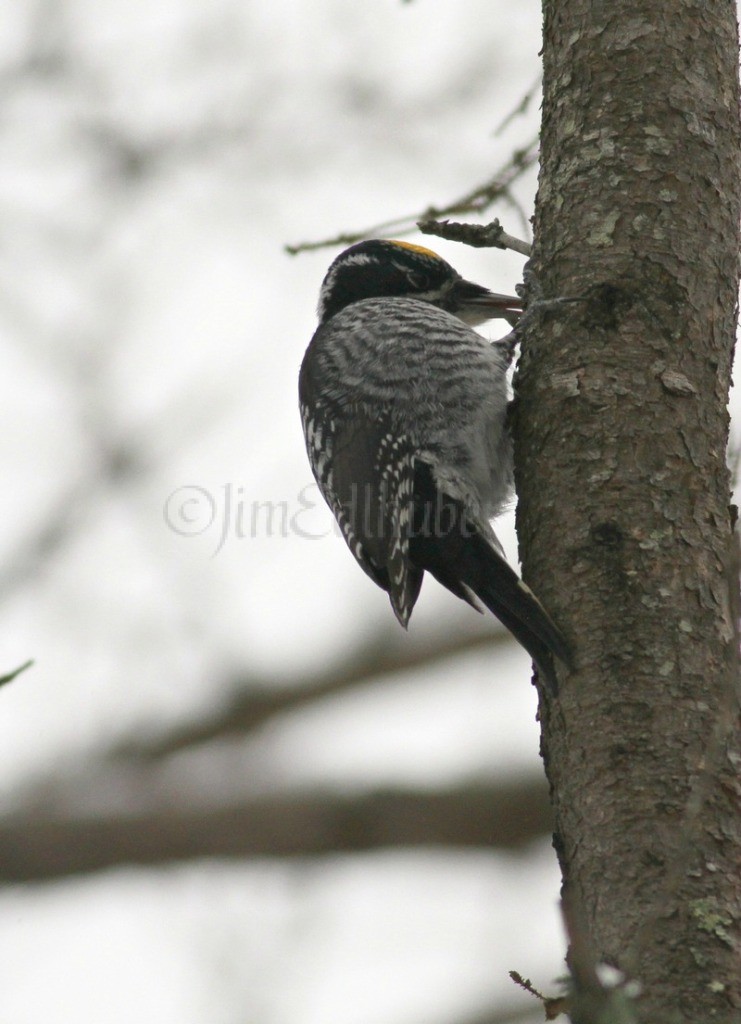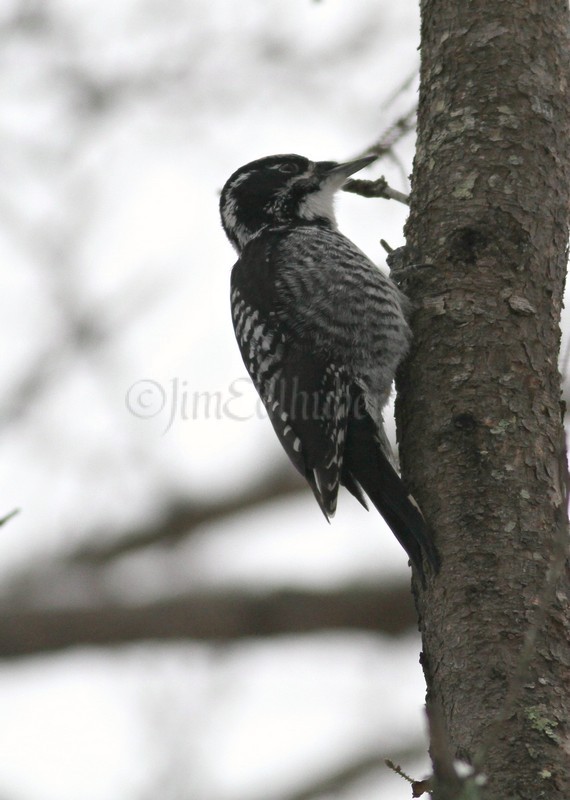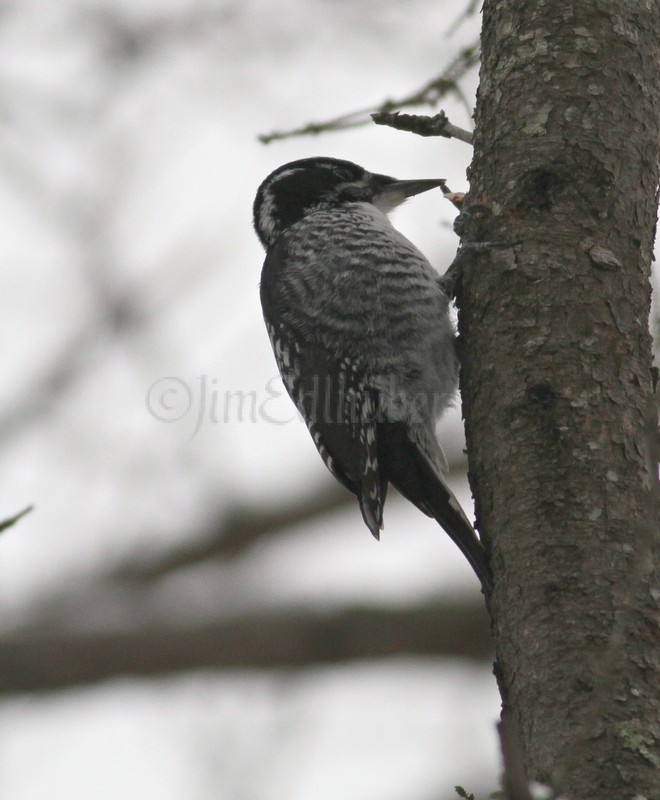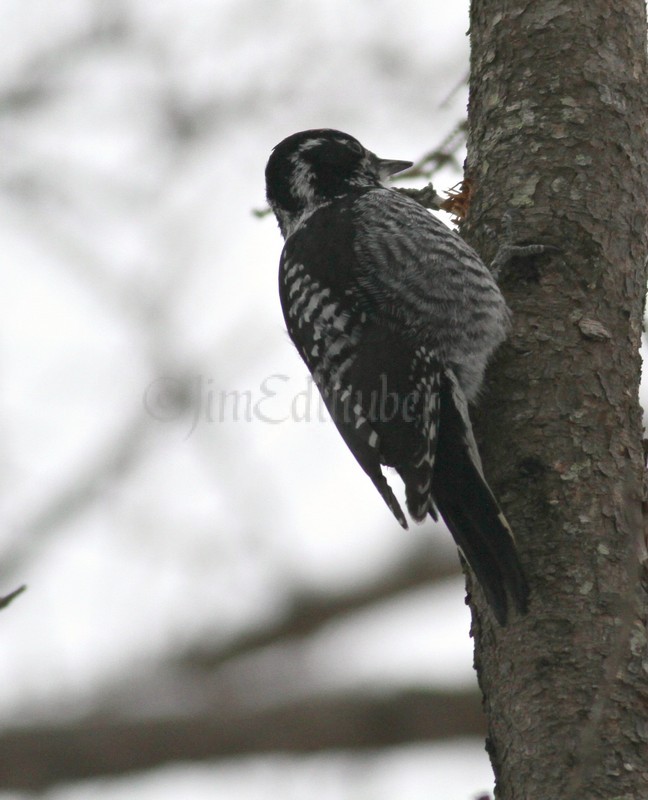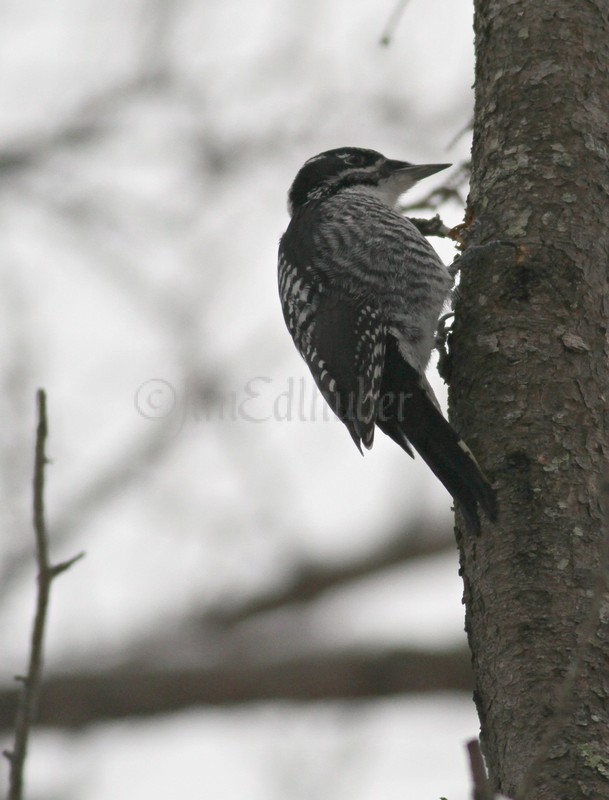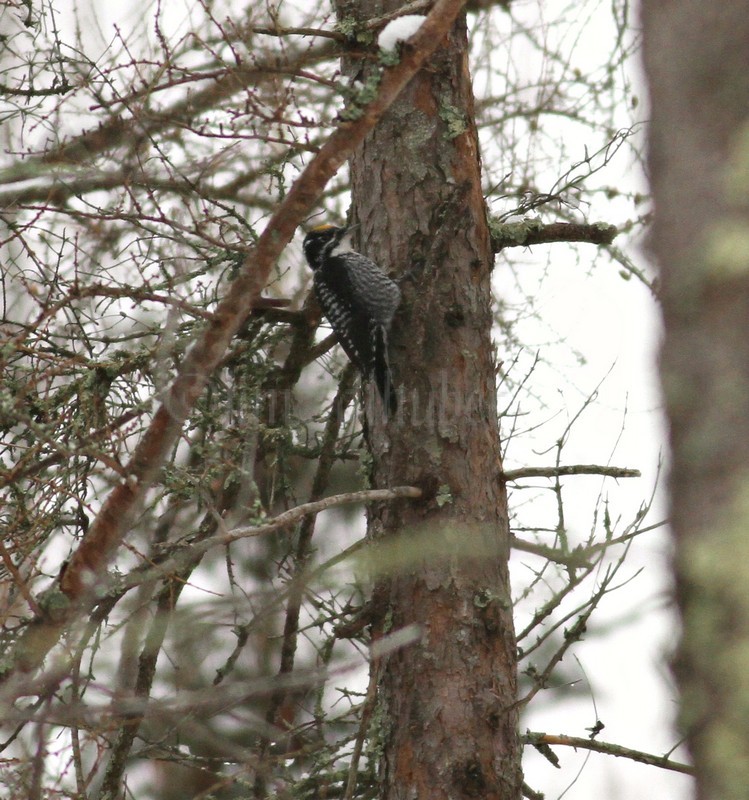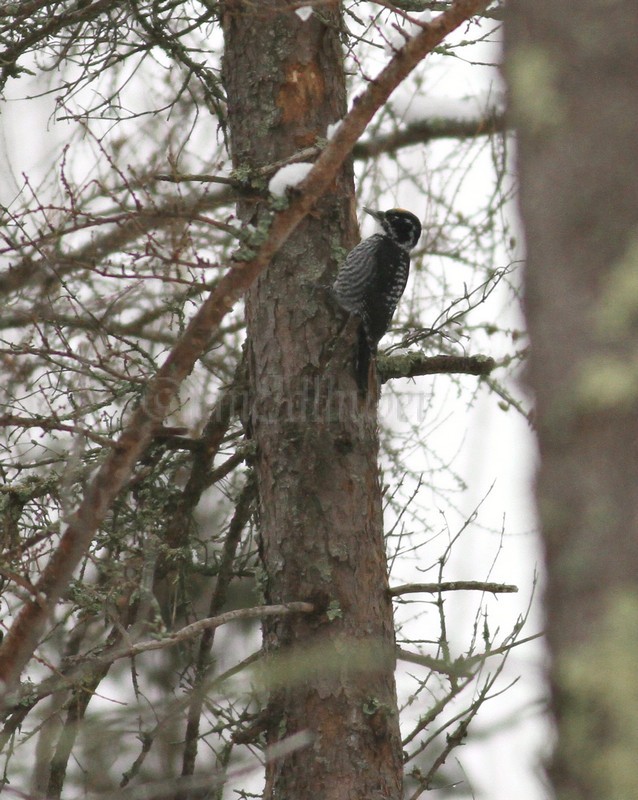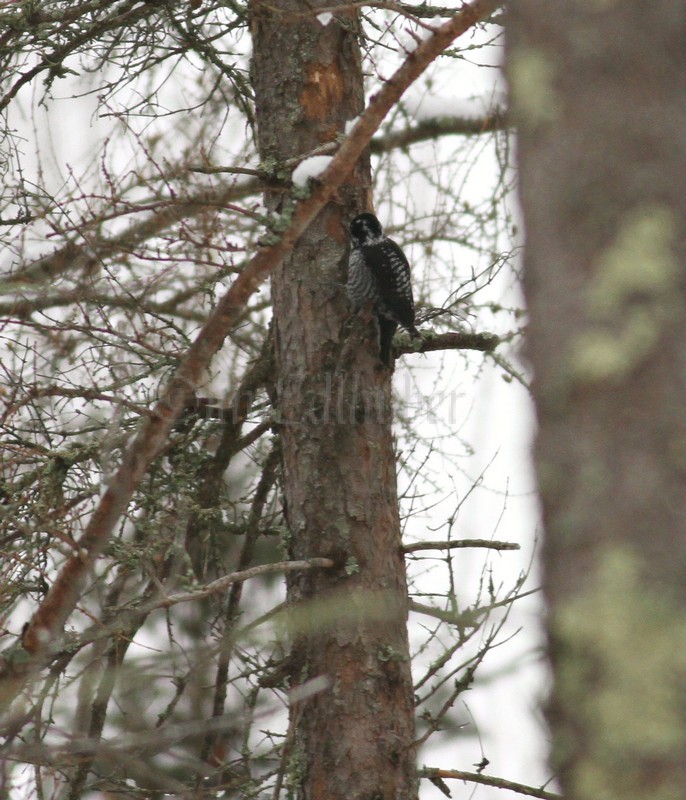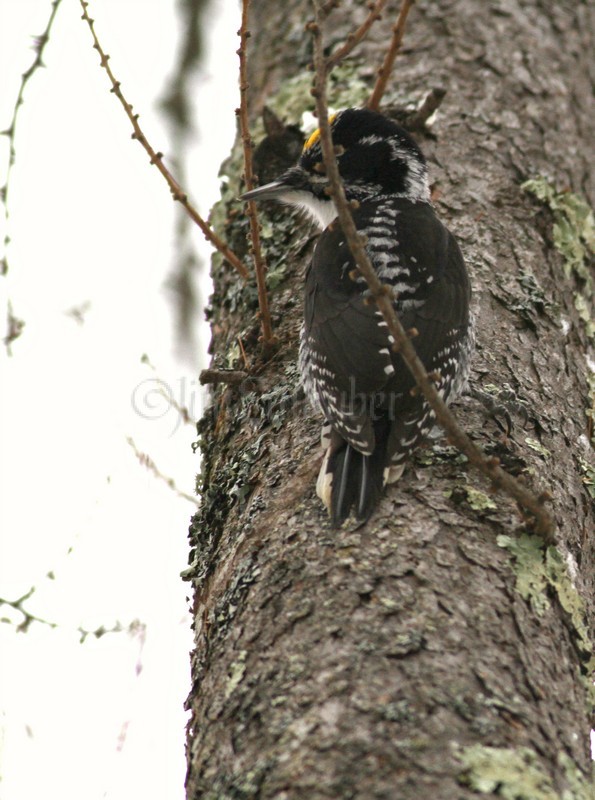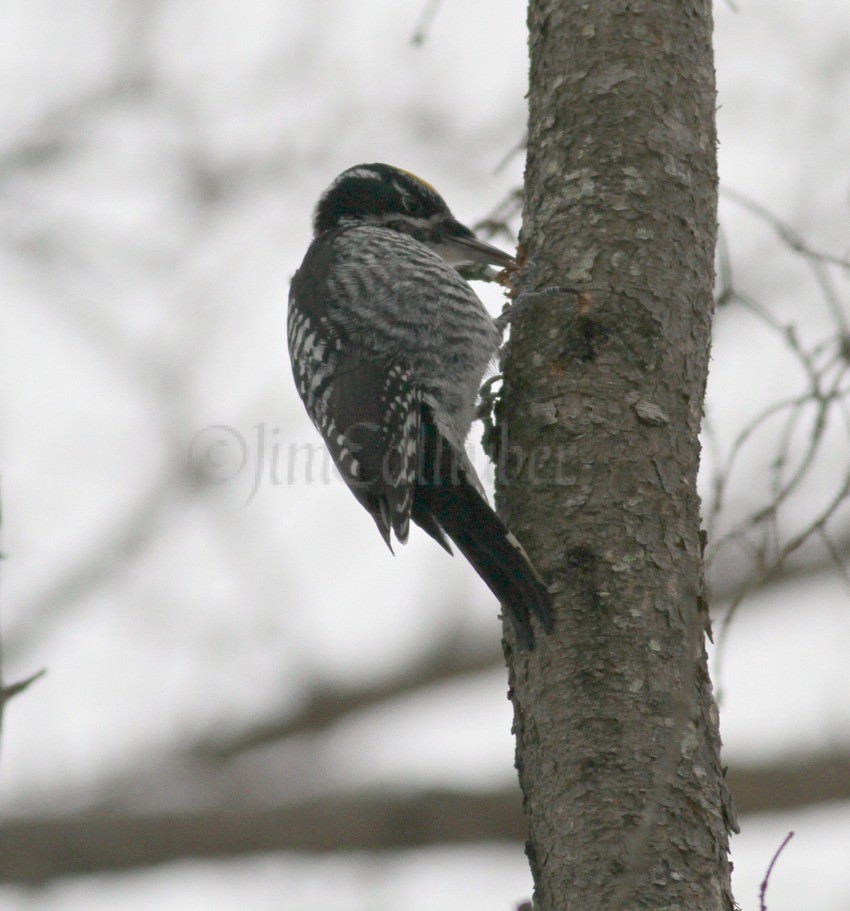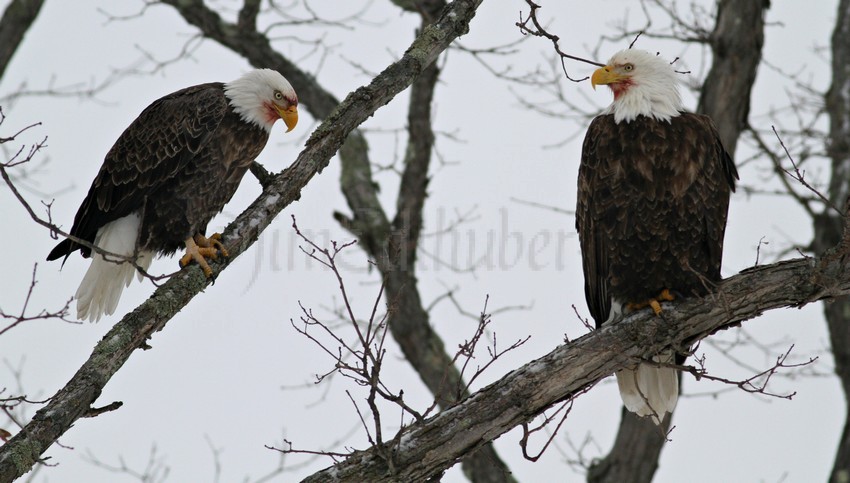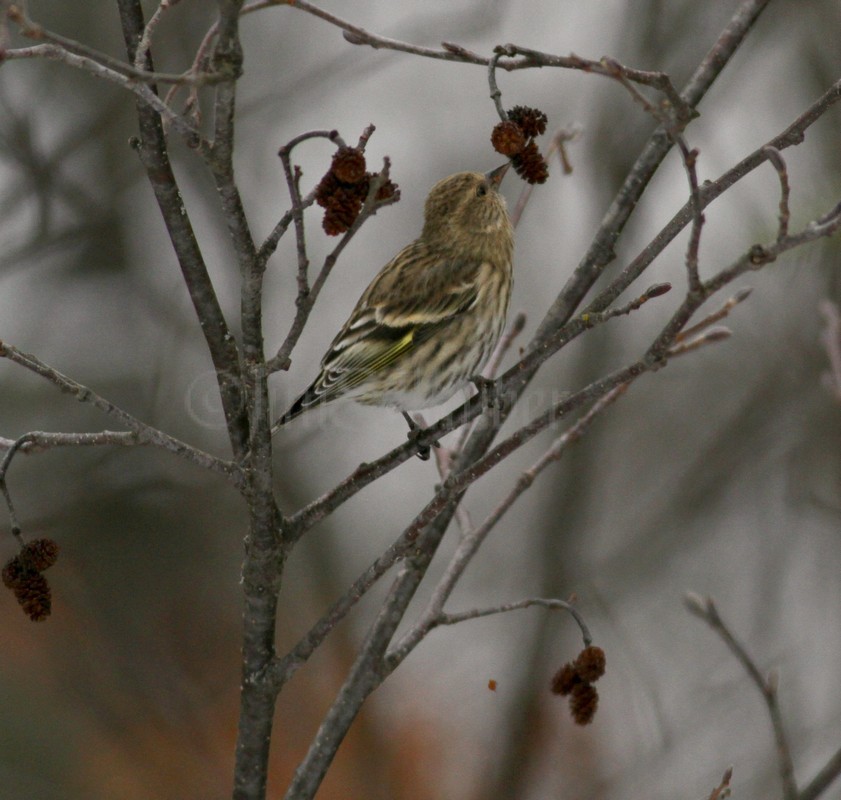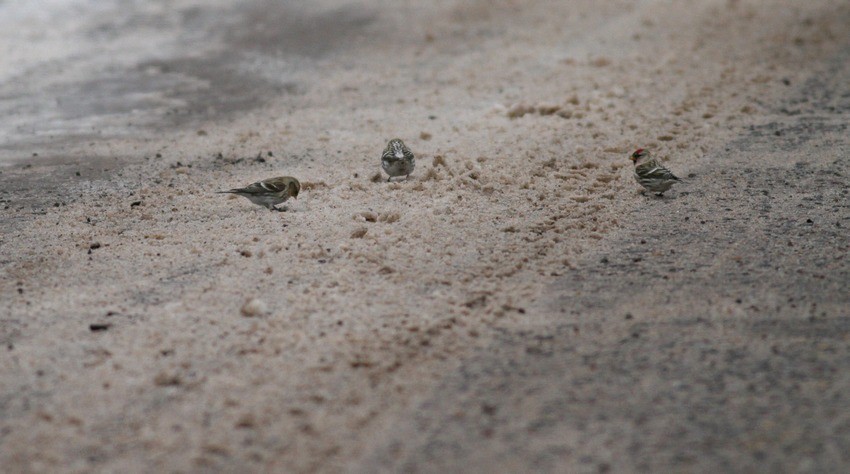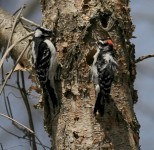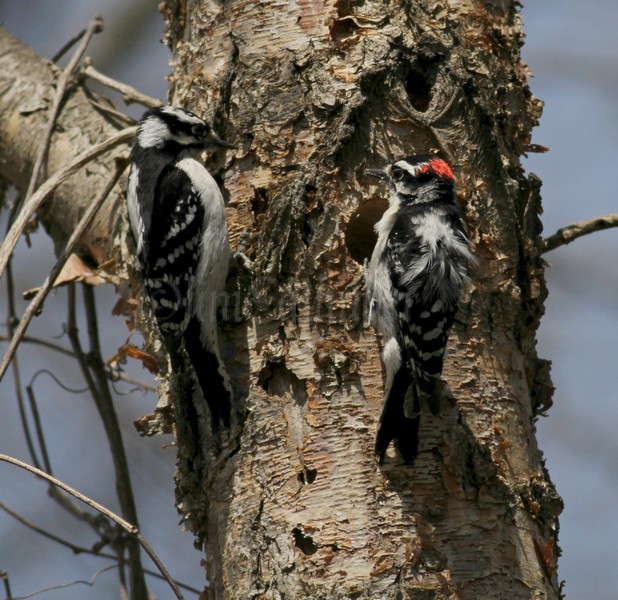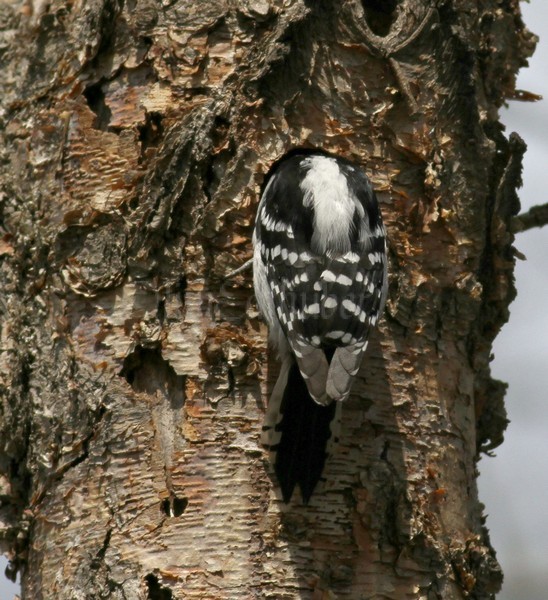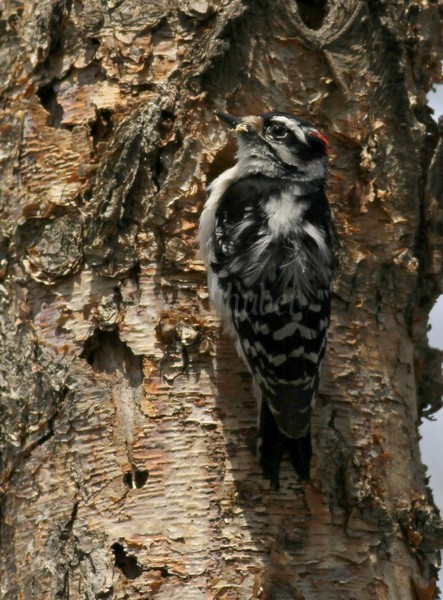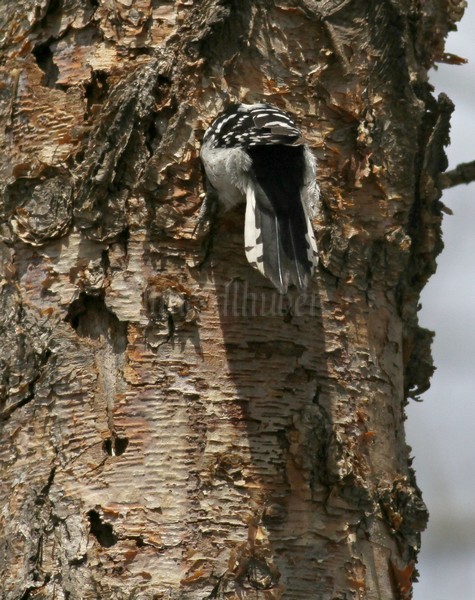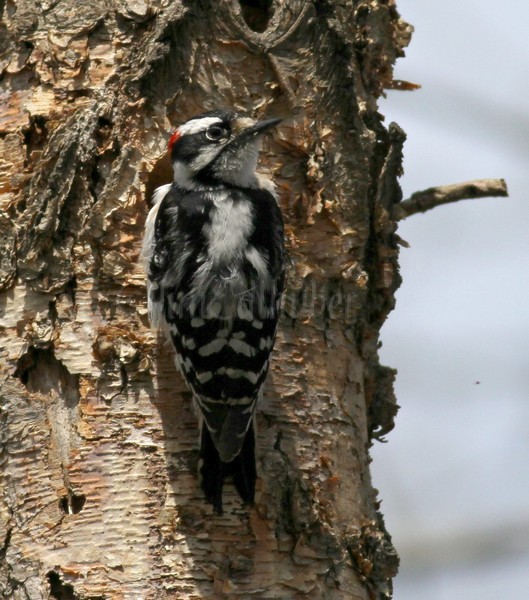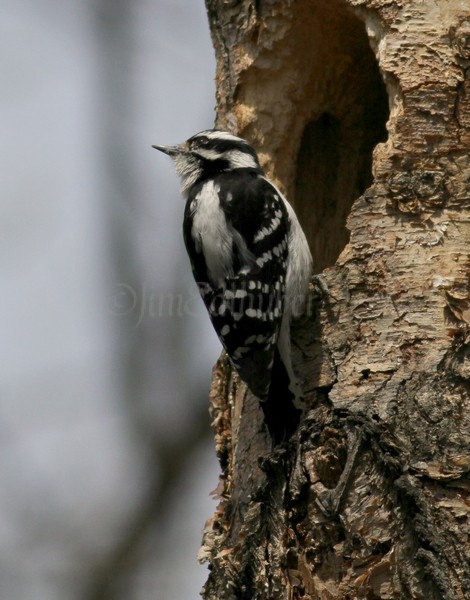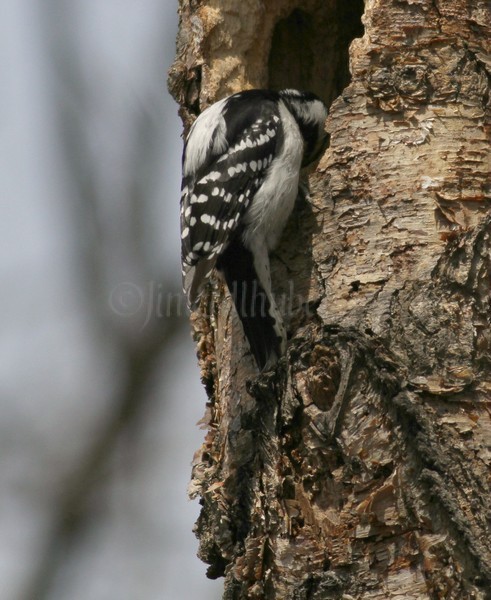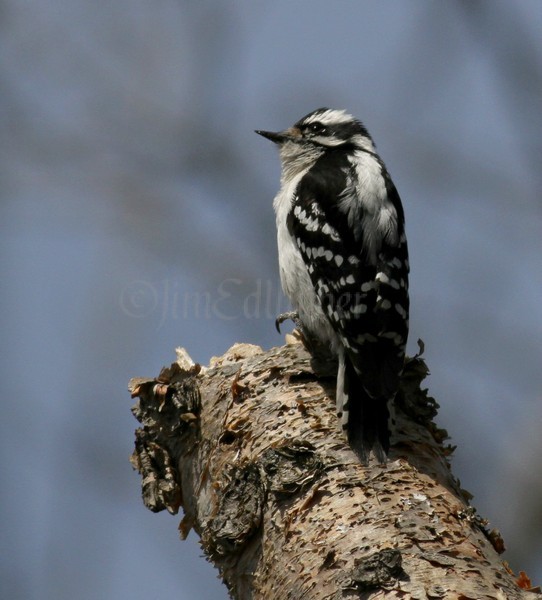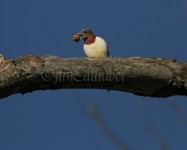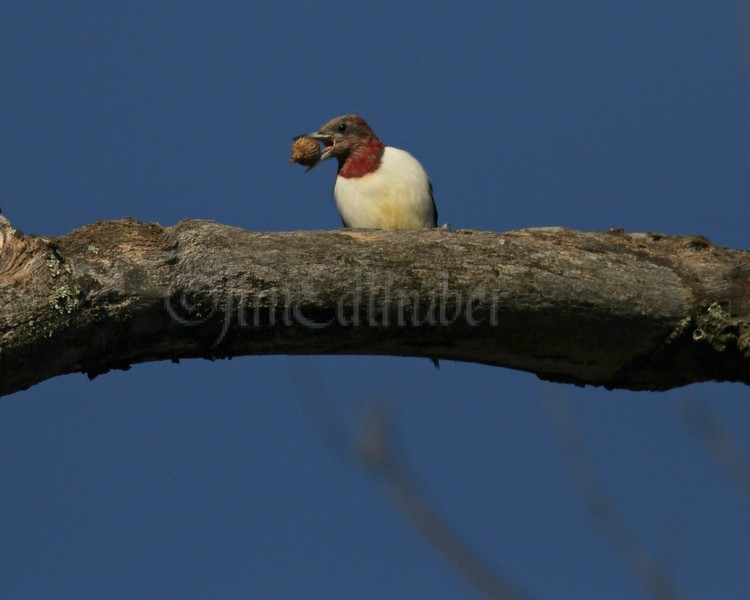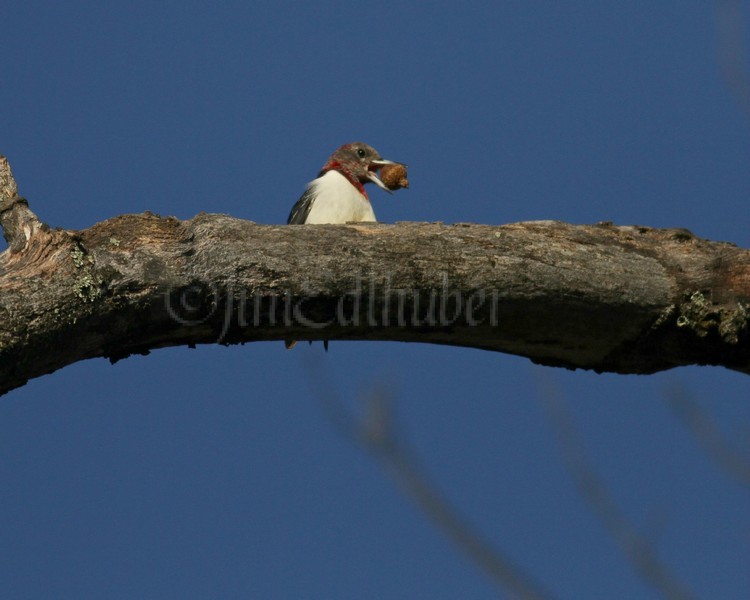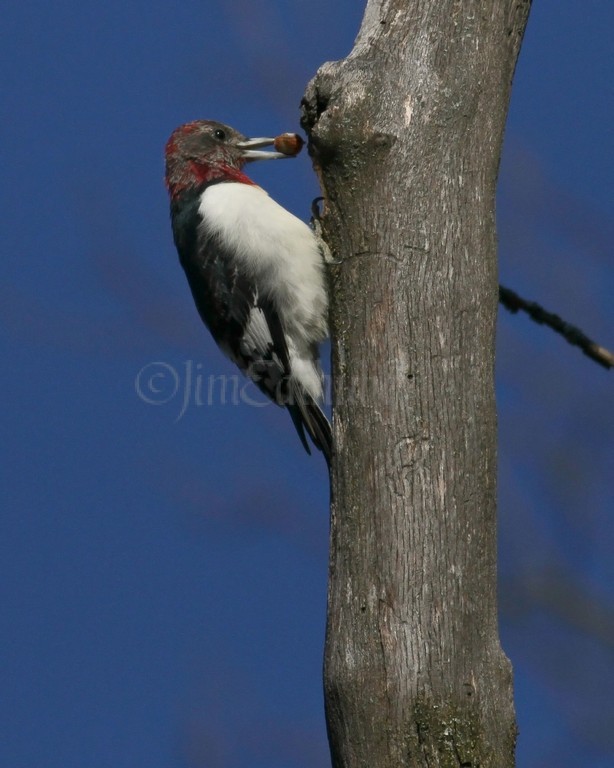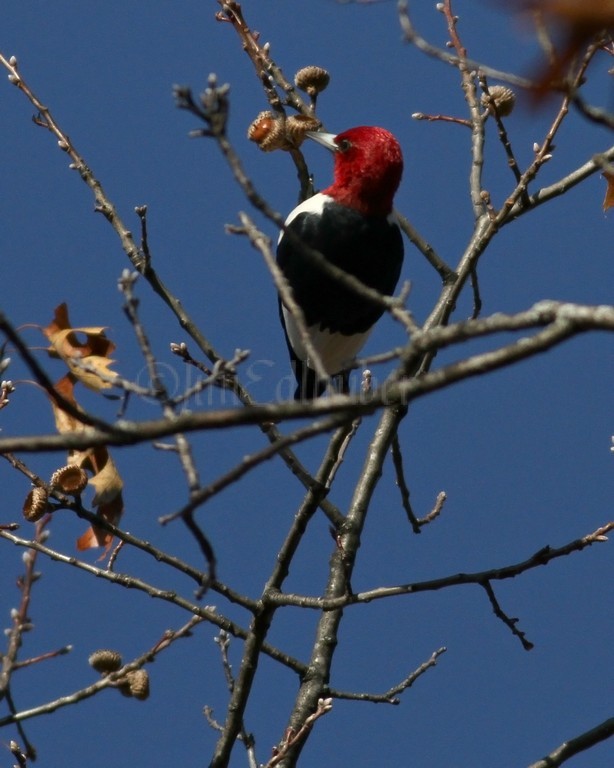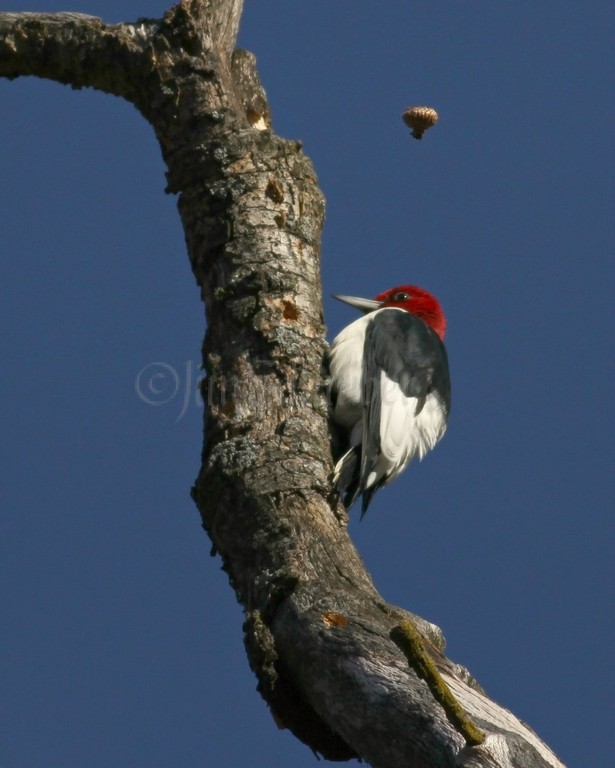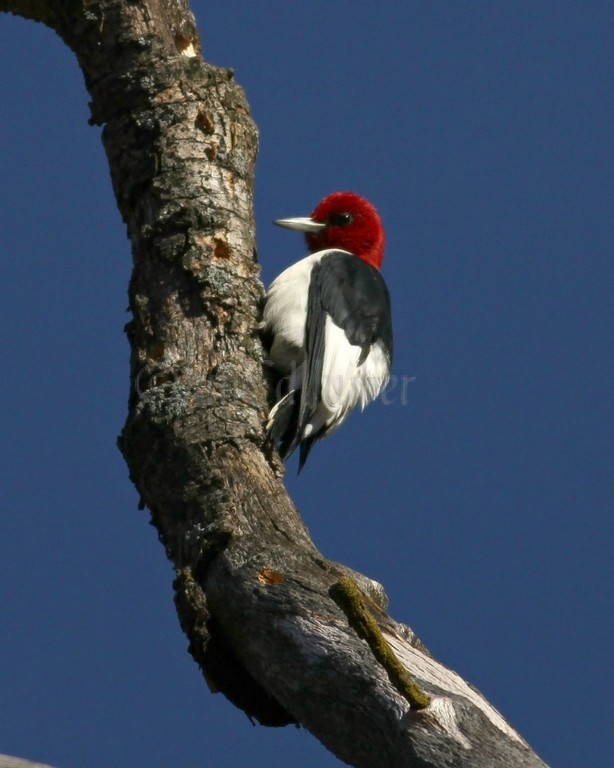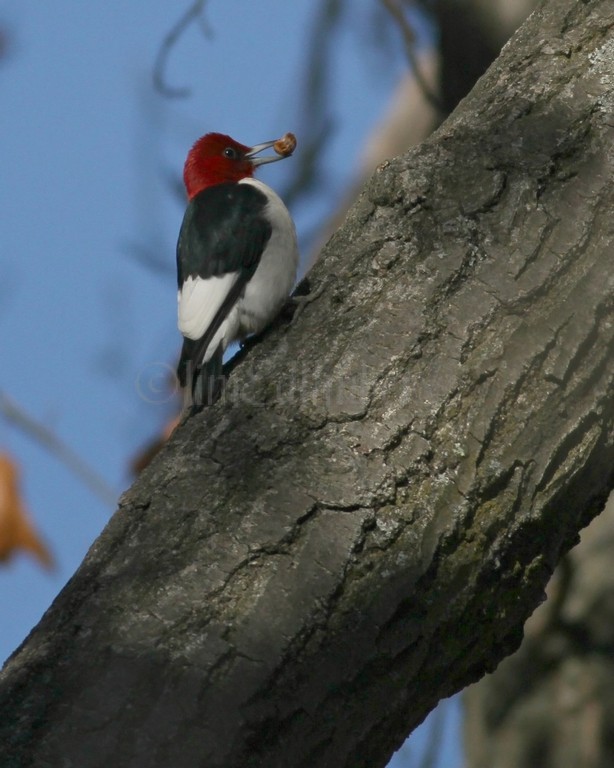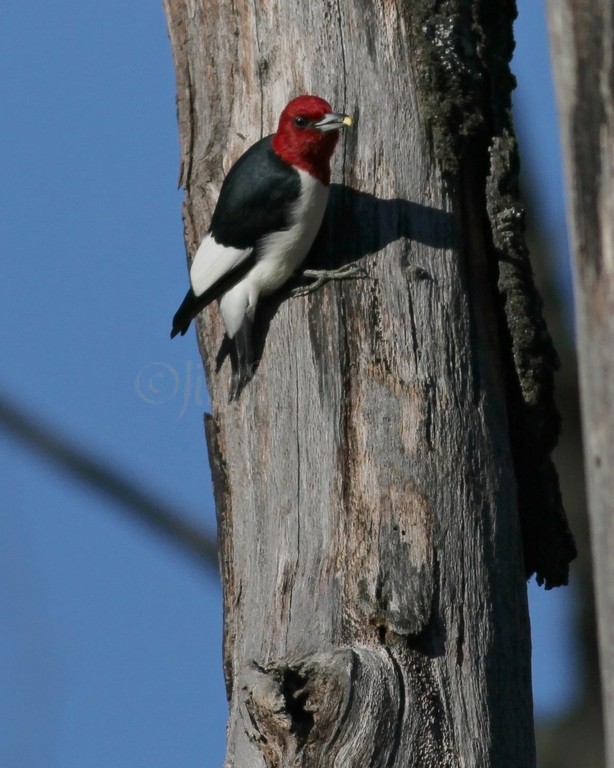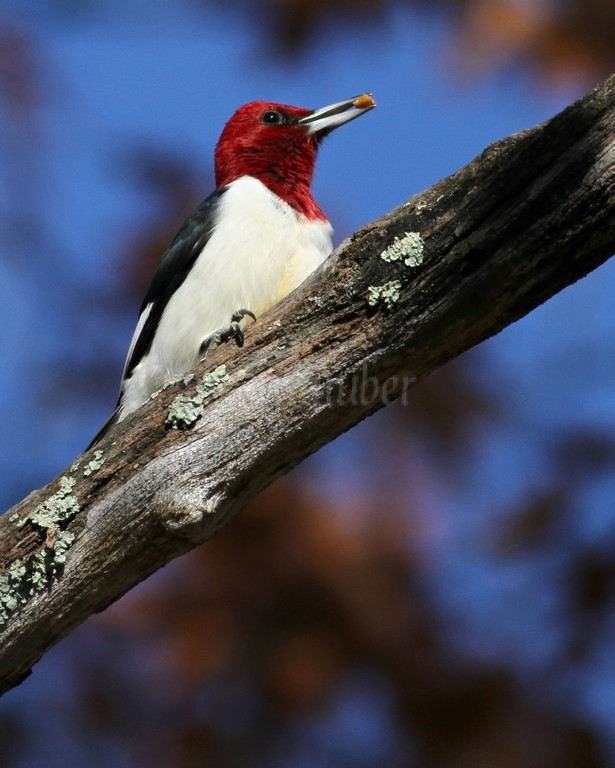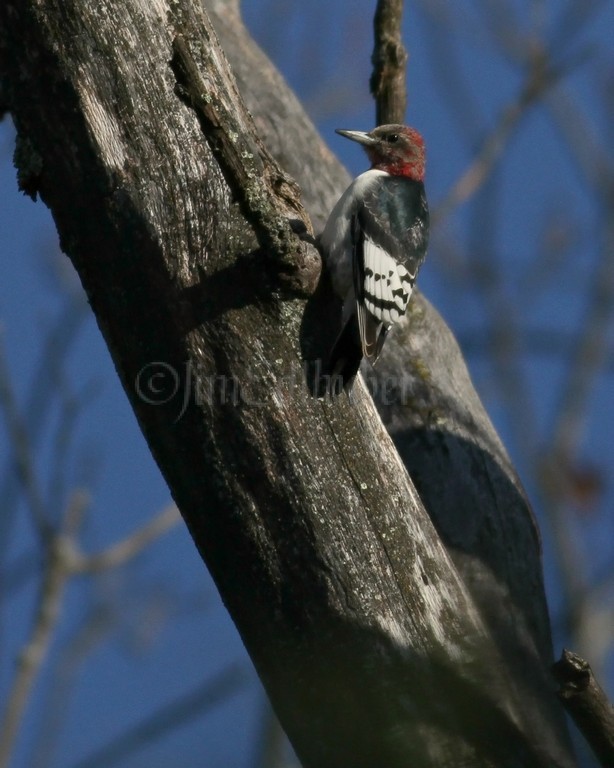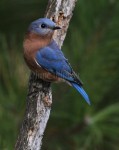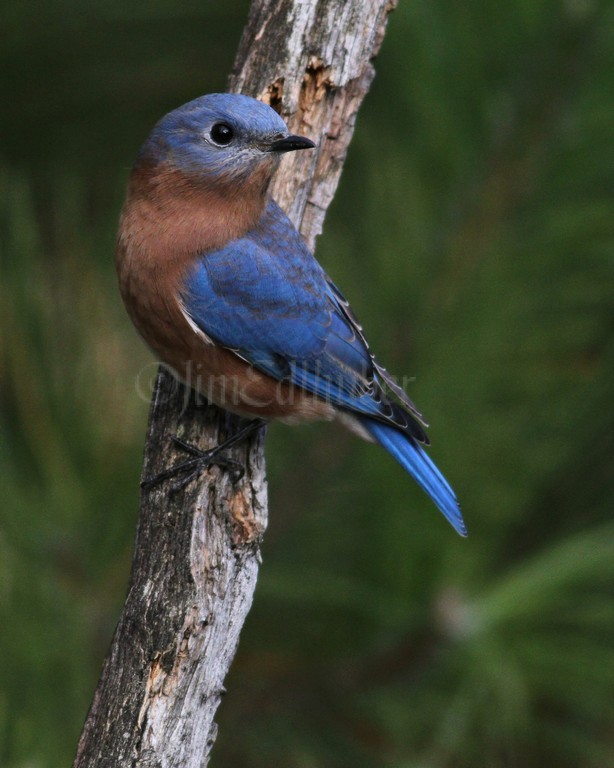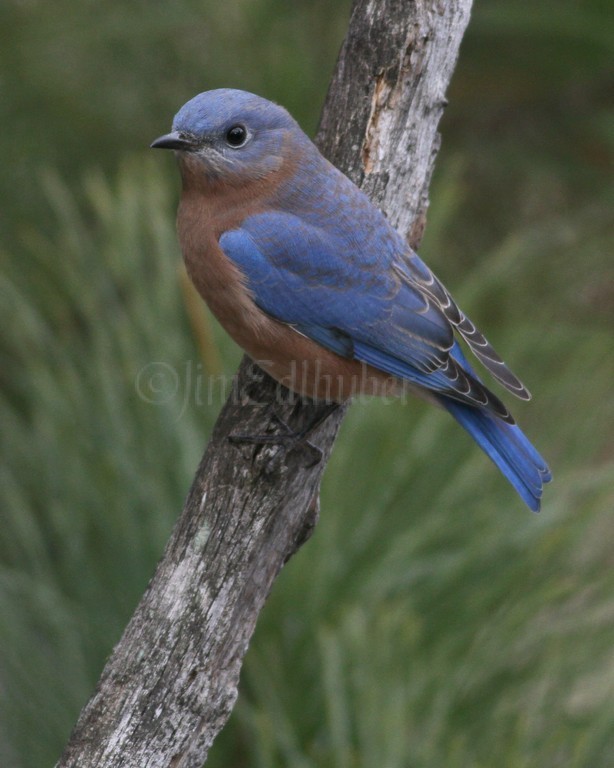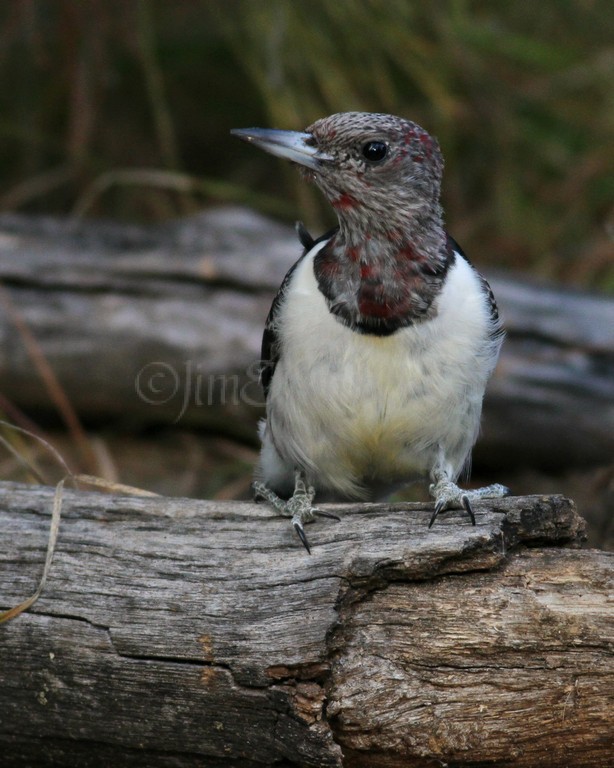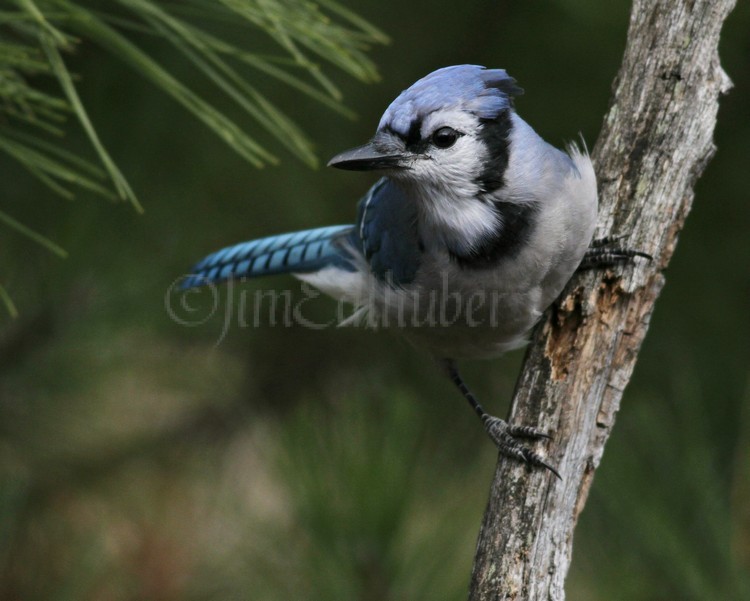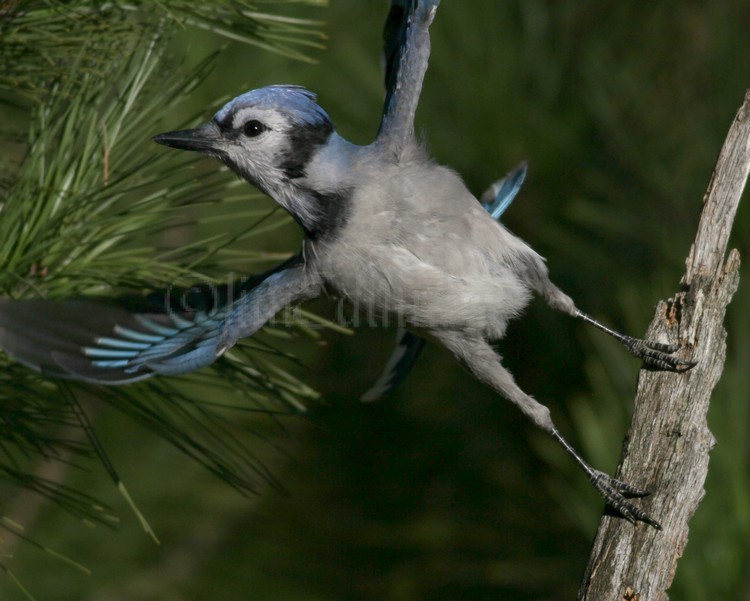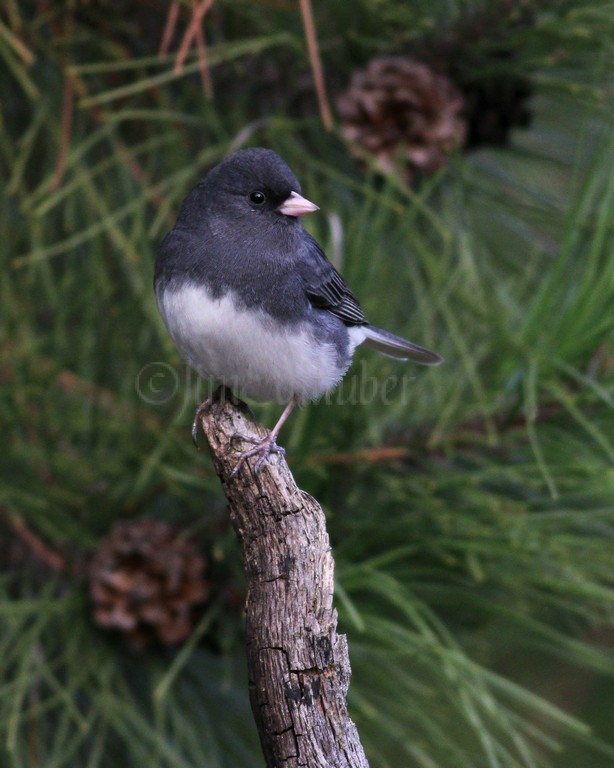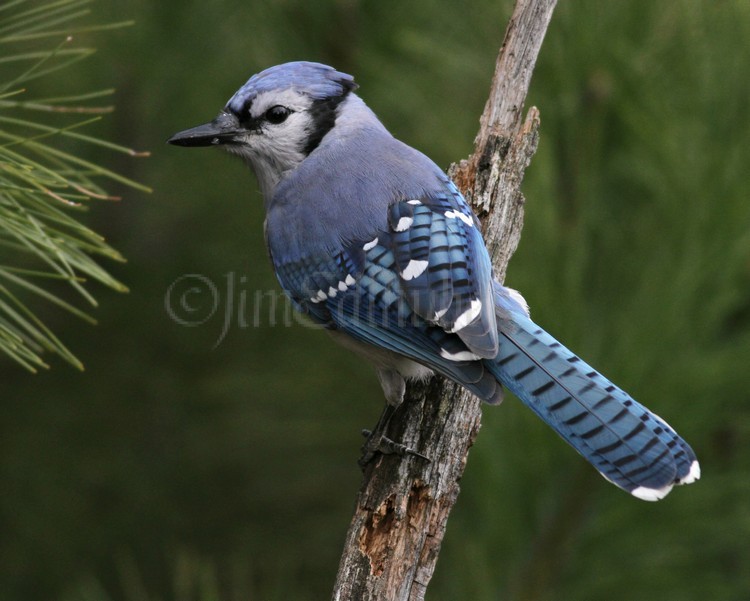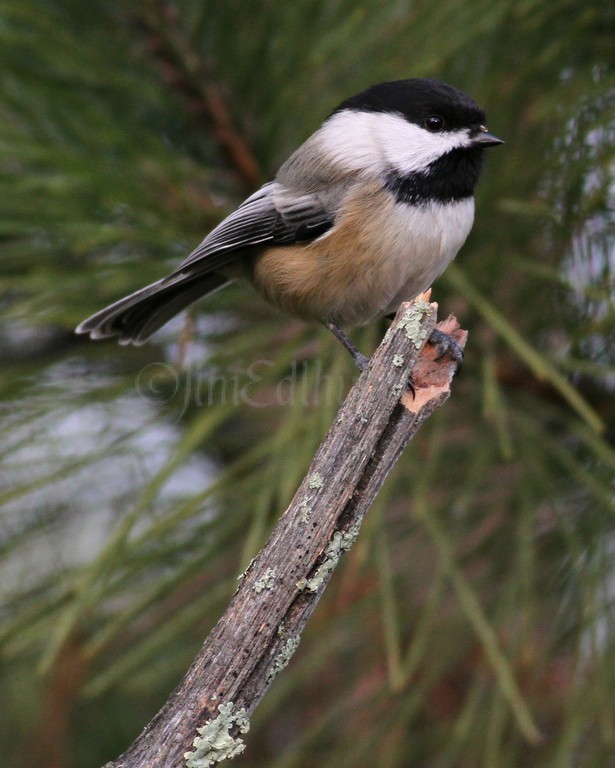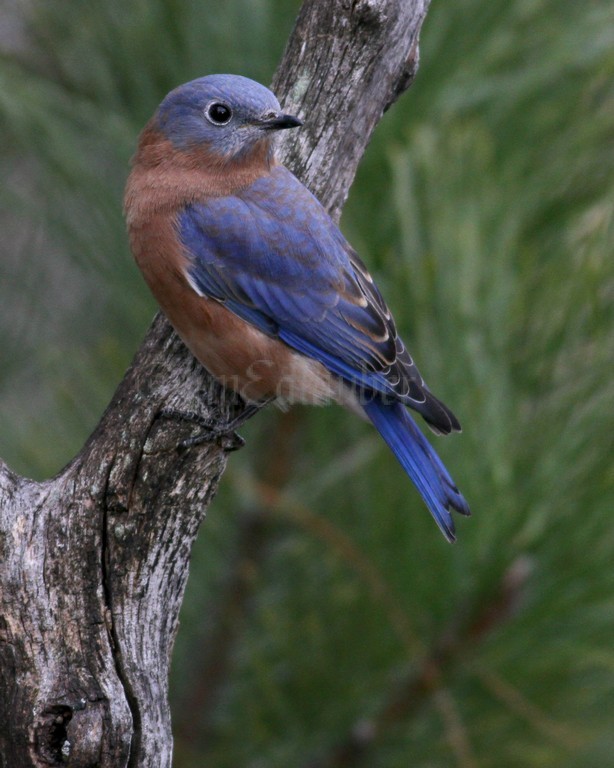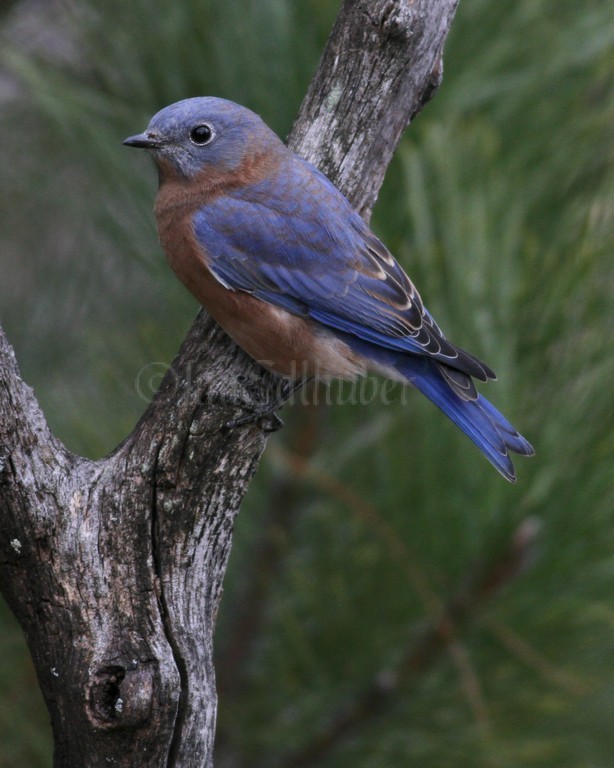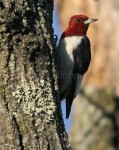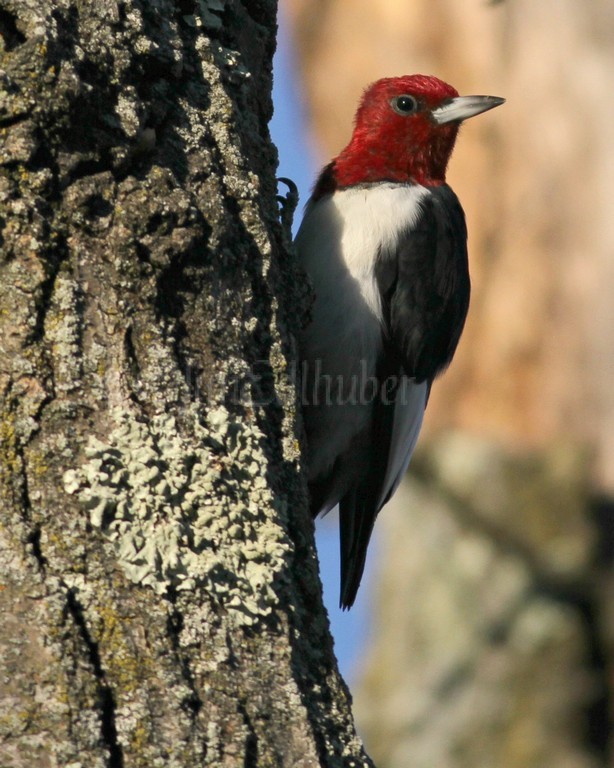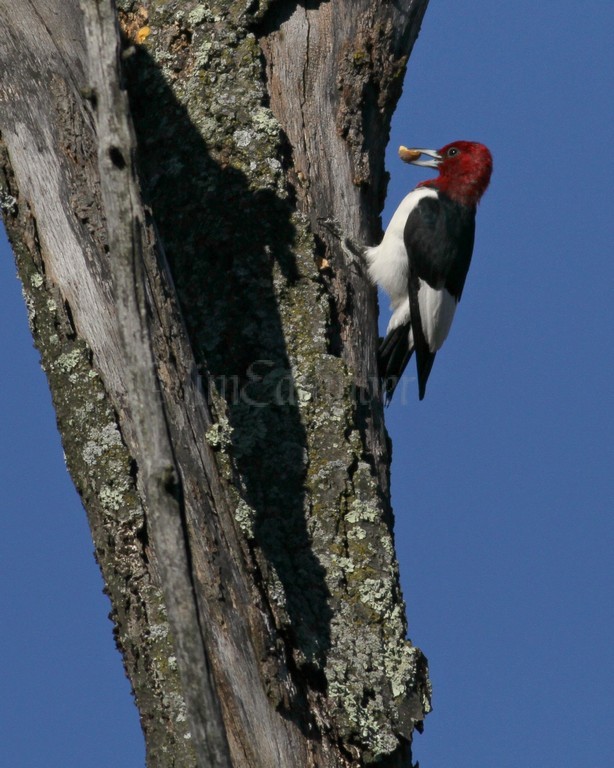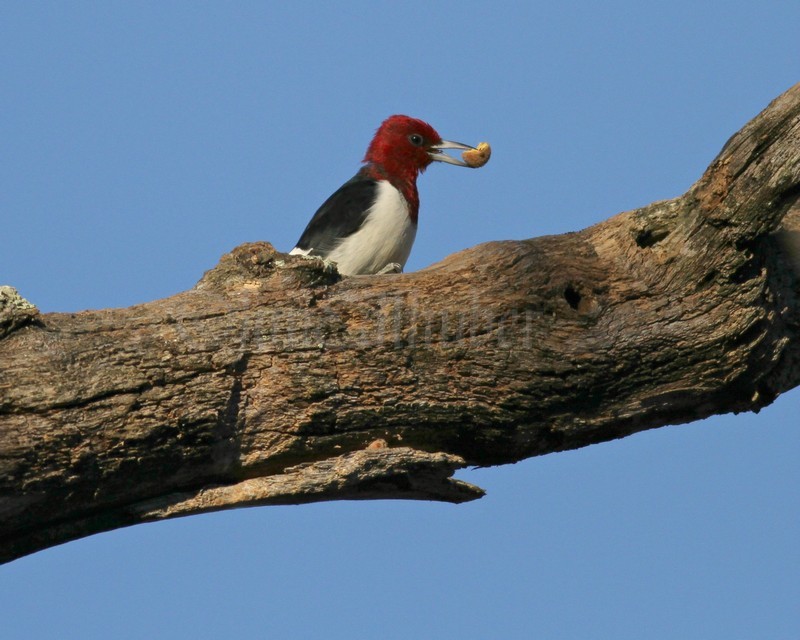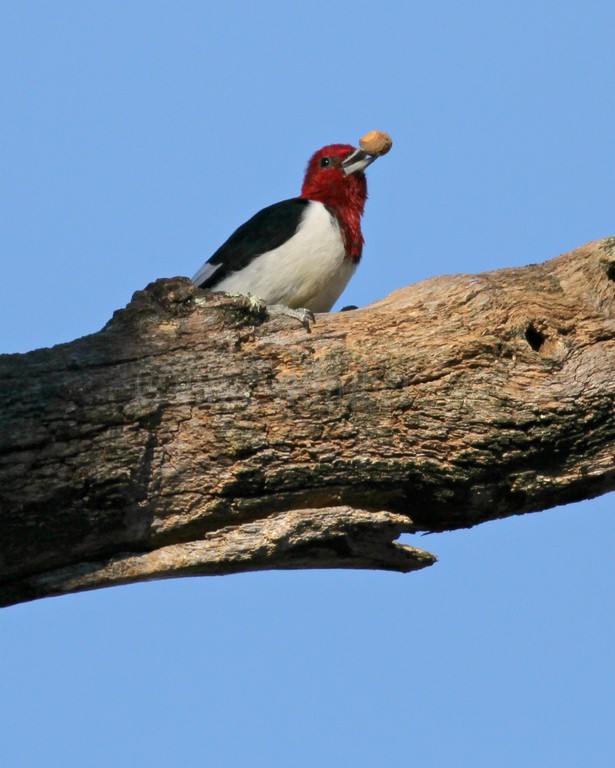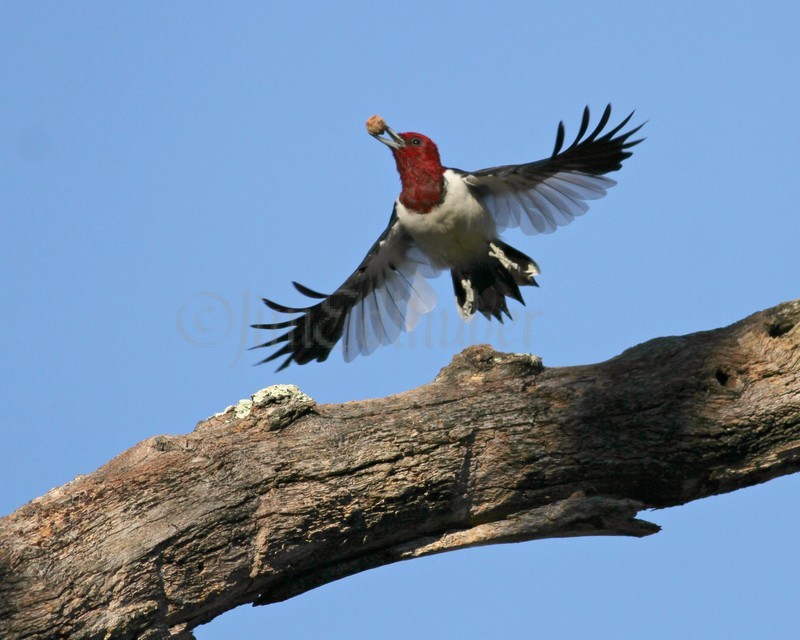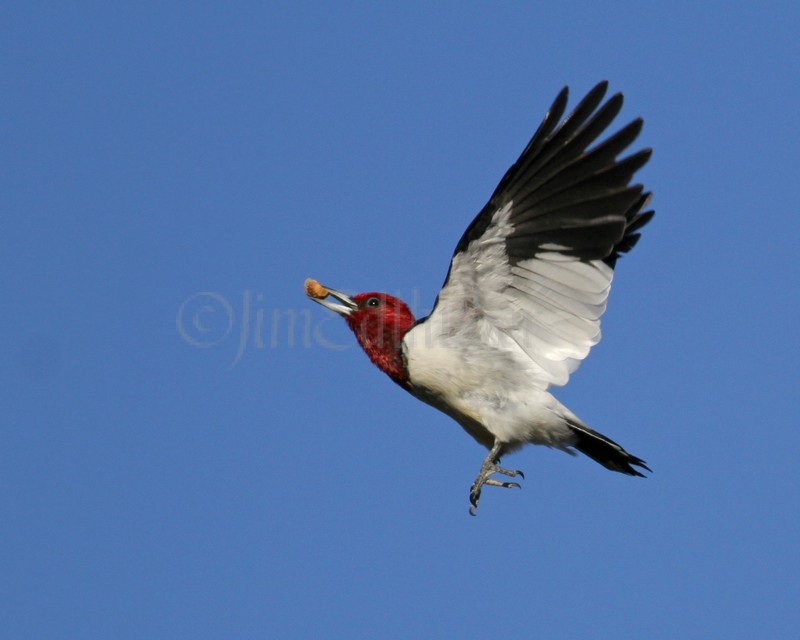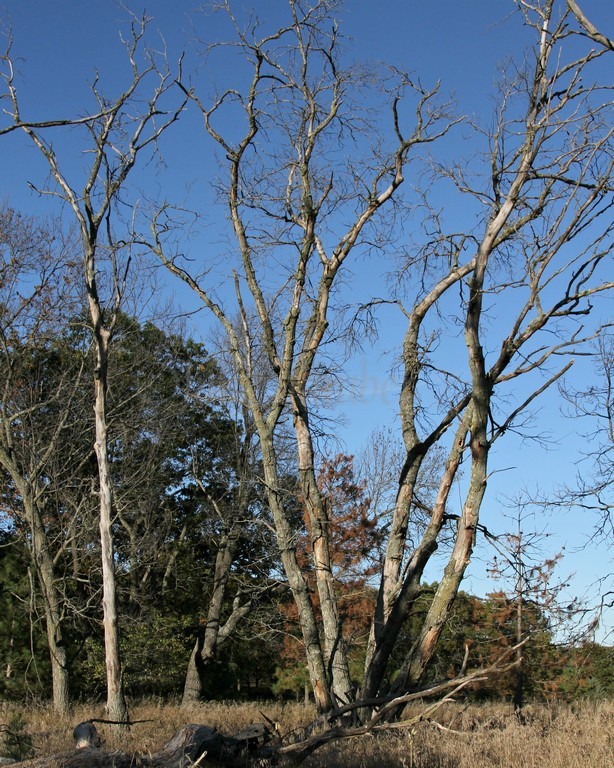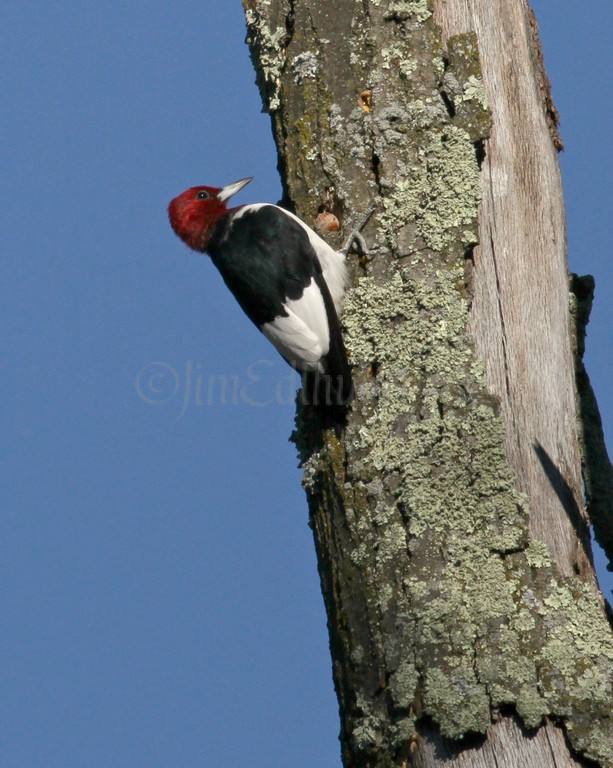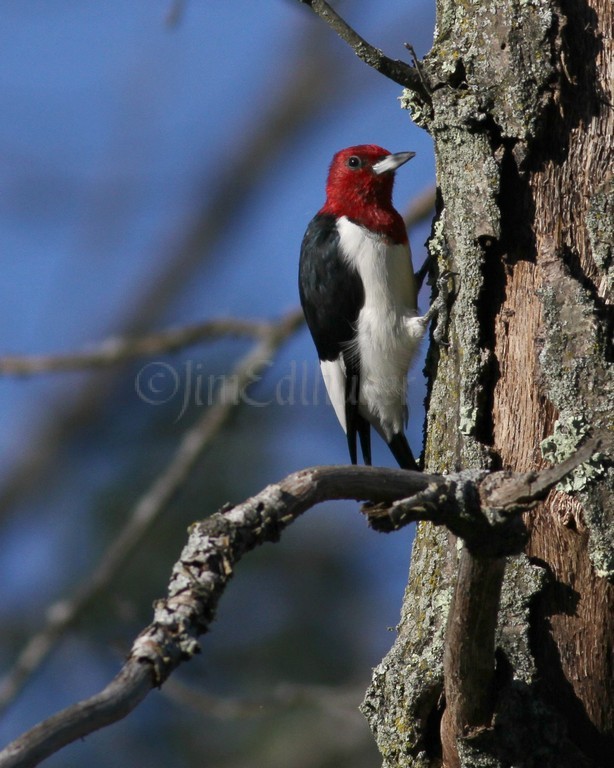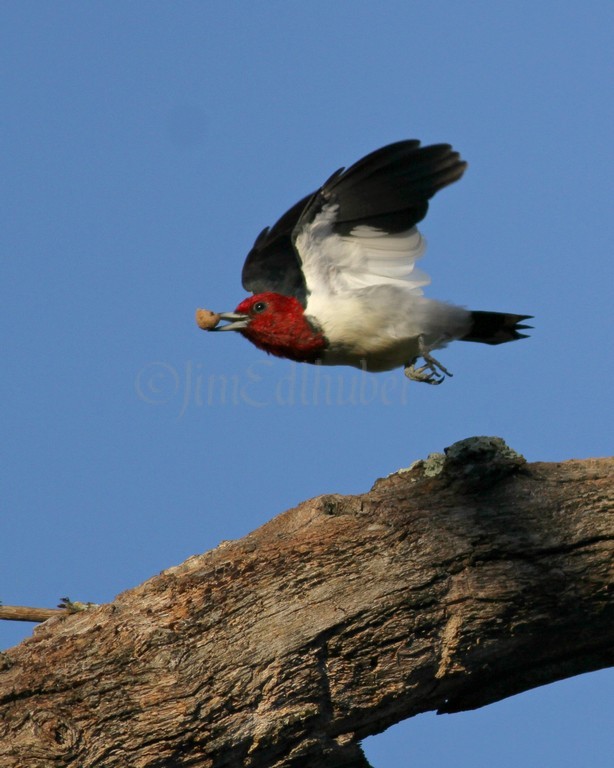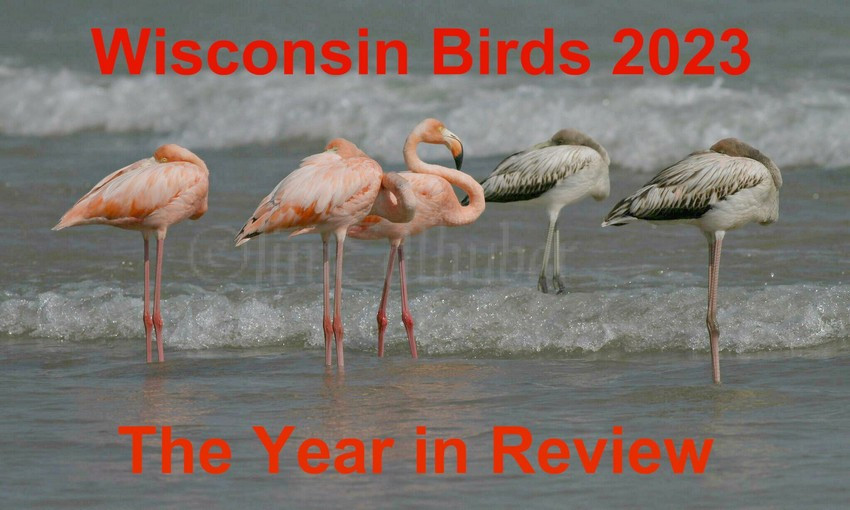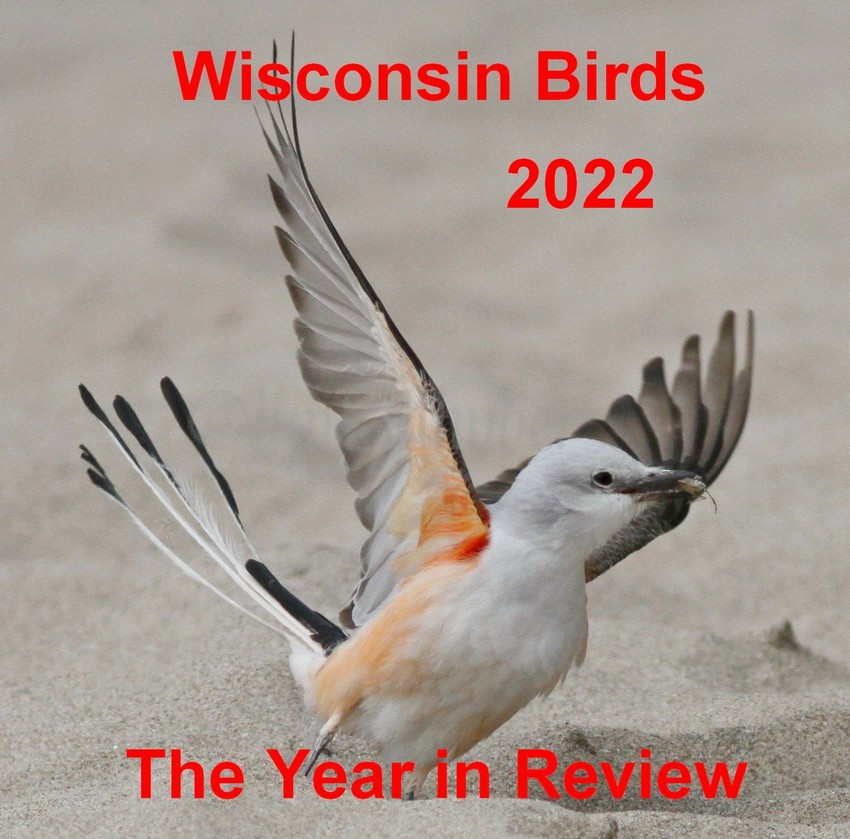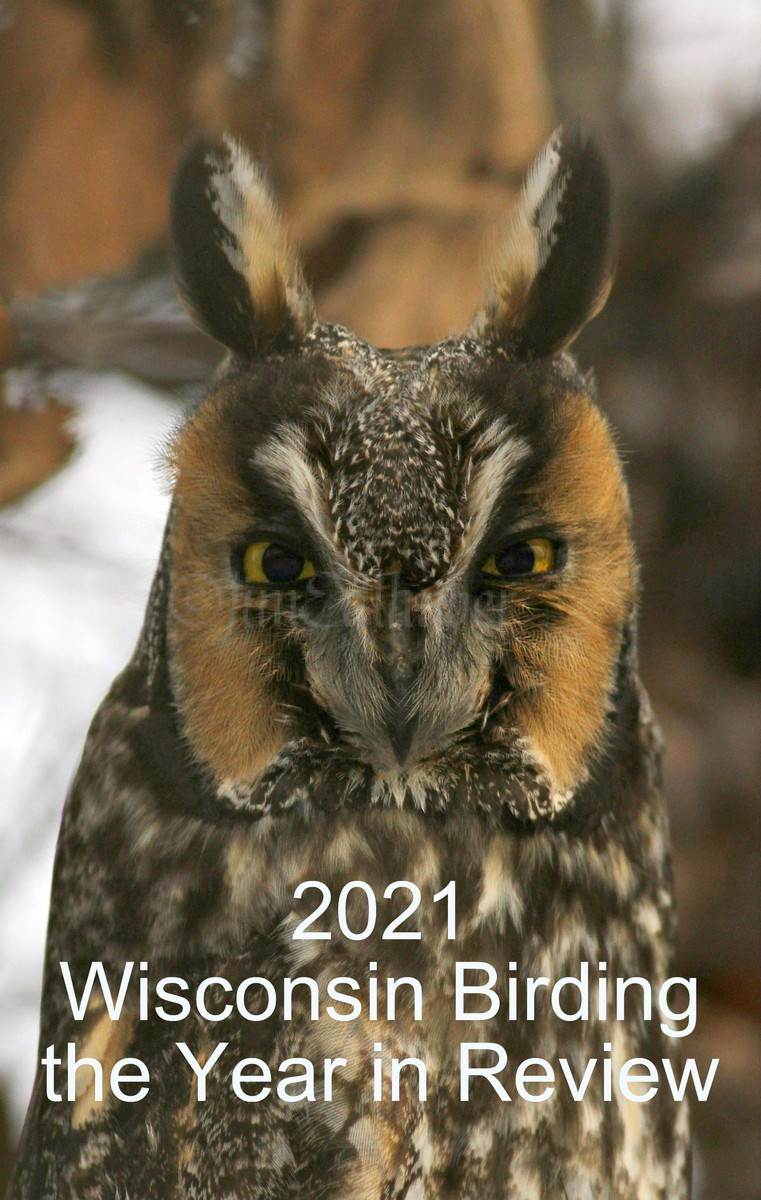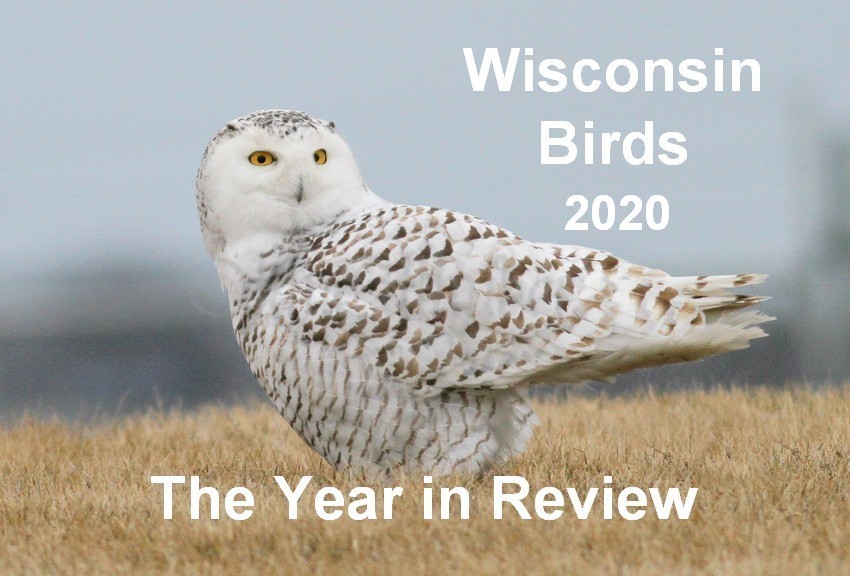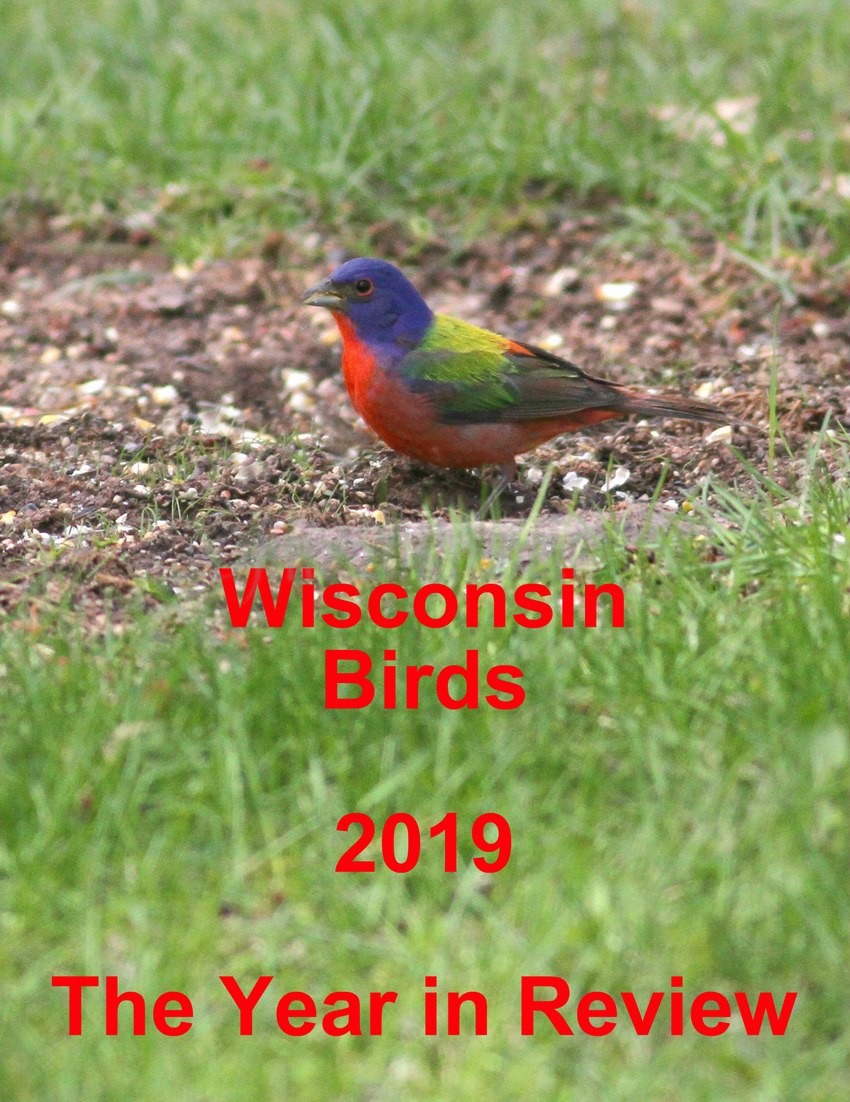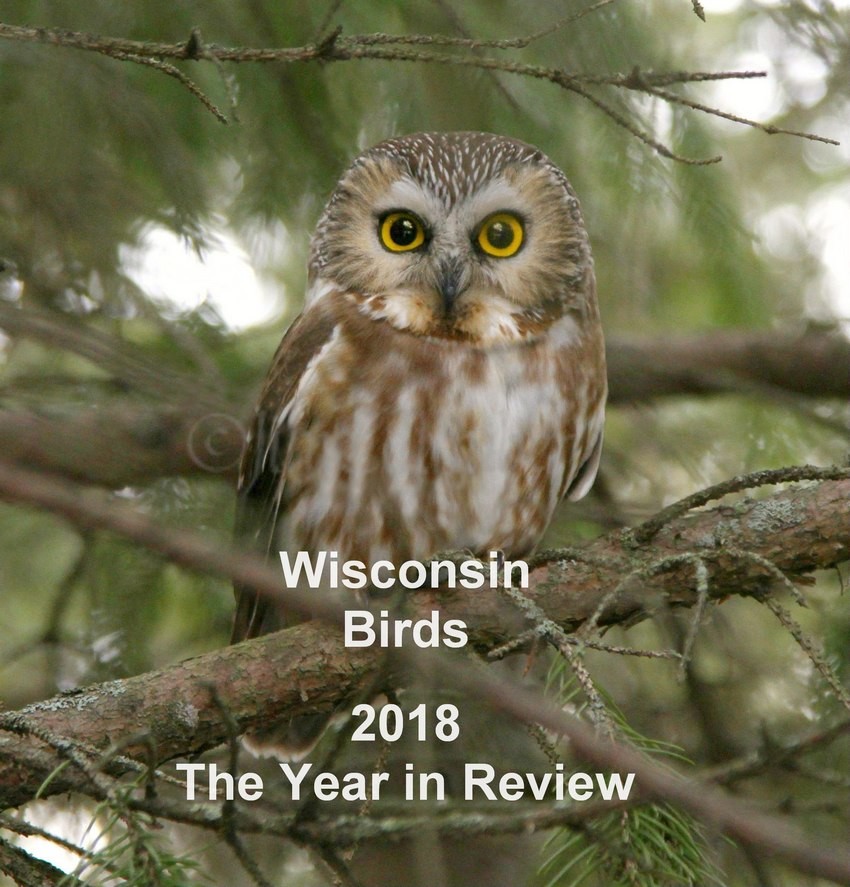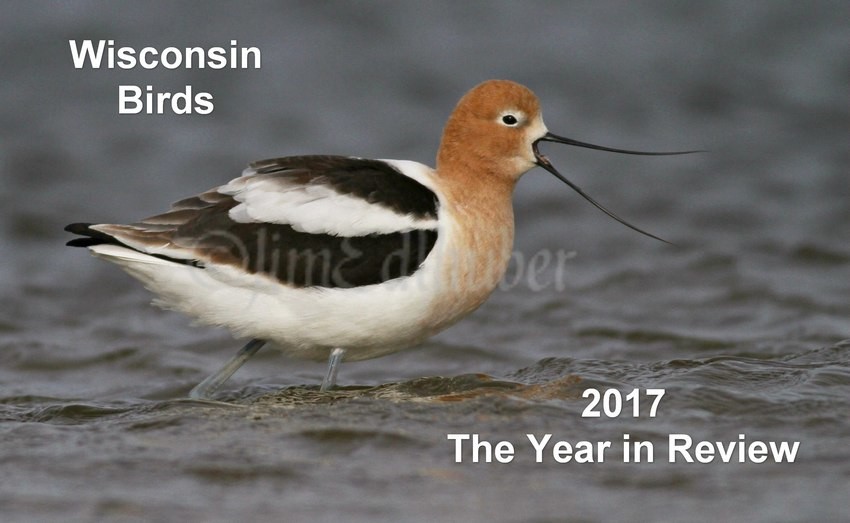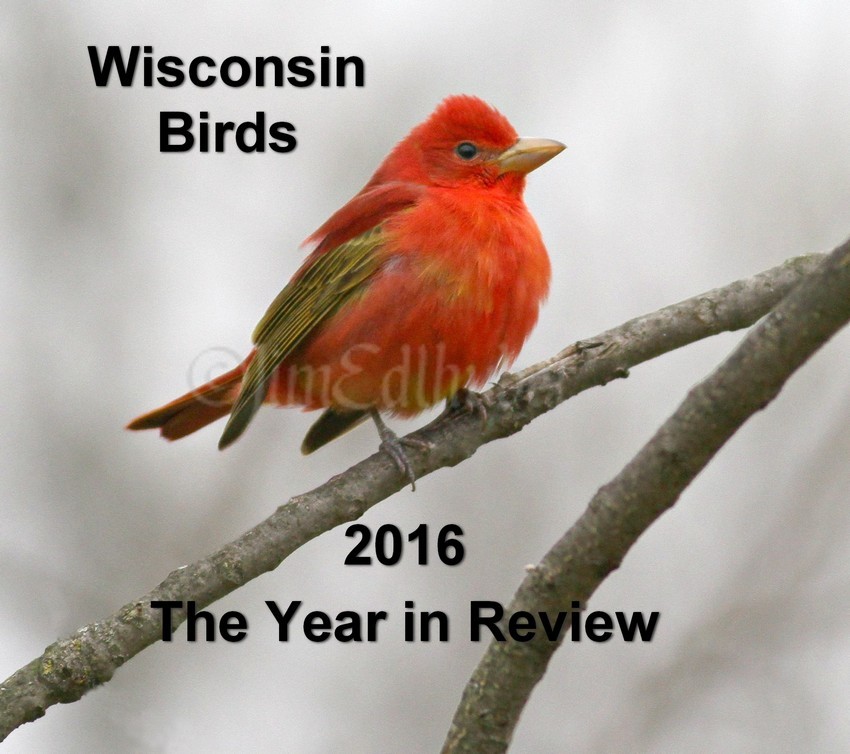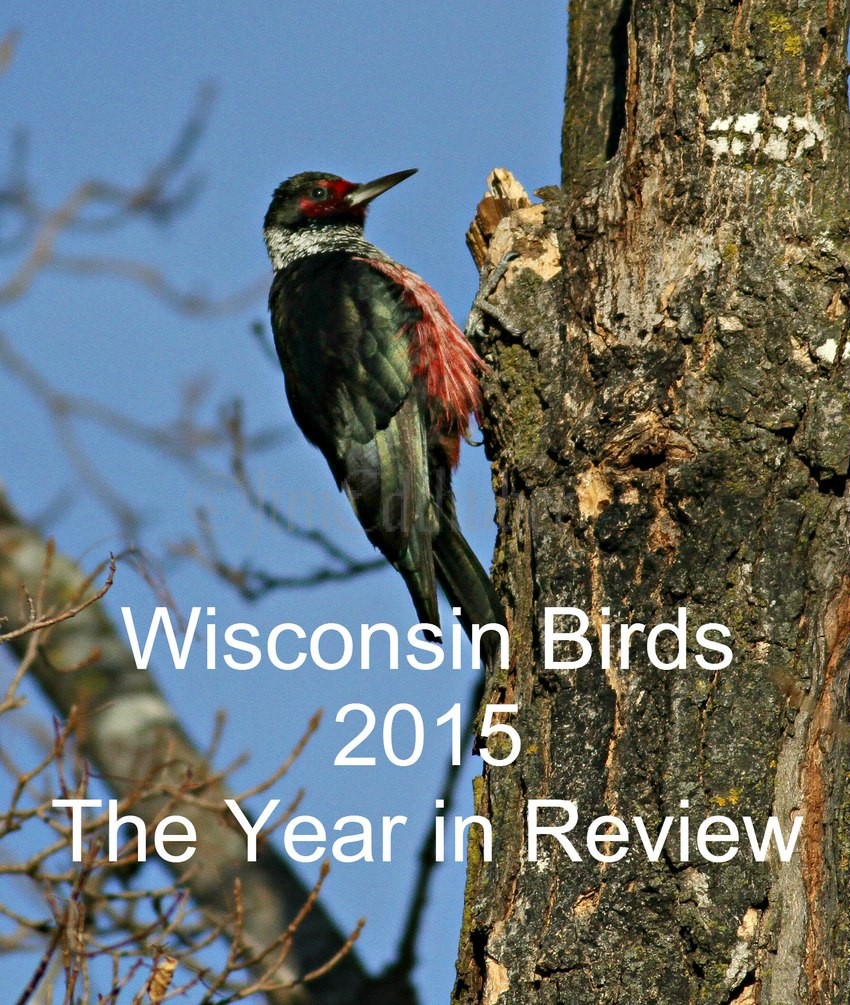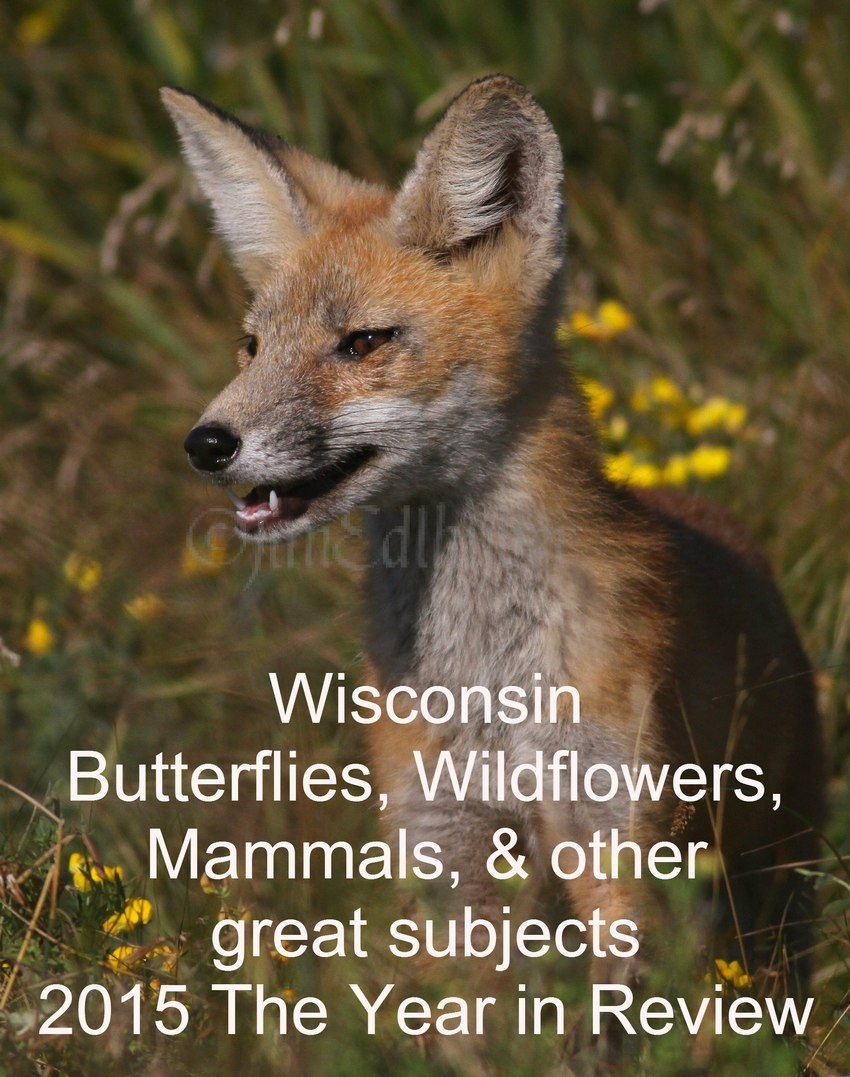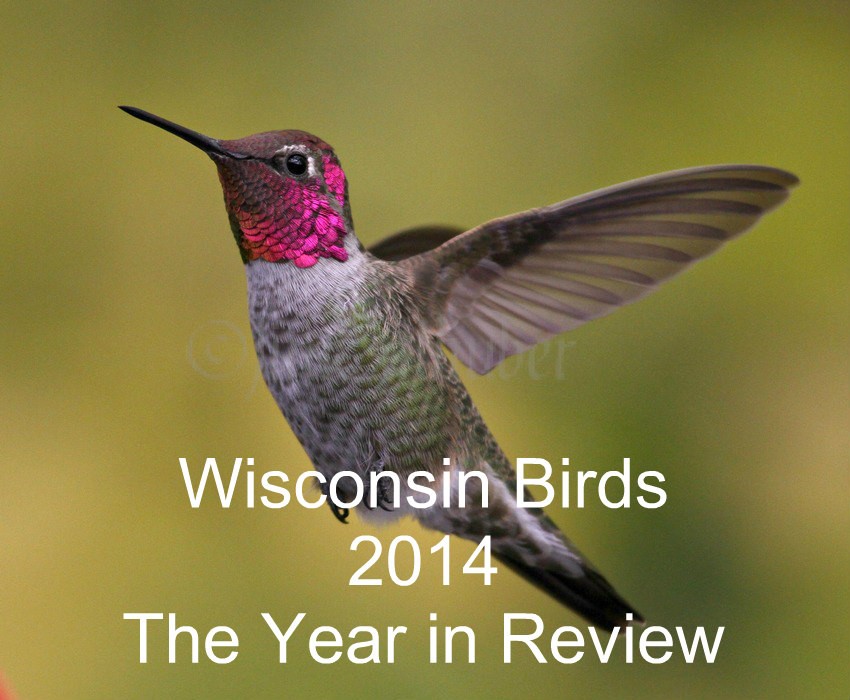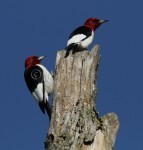
I came across a pair of Red-headed Woodpeckers in the South Kettle Moraine near Eagle Wisconsin. It appeared they were setting their sights on a dead oak tree, a place to raise young this year. I watched this pair for almost 2 months and almost daily. I started observing them when they started cleaning out an existing hole in a dead tree. They were getting it ready for the egg laying. As days went by they started bring food to the young. As the young got older they became visible in the hole opening. One thing I’ve noticed photographing these birds was that they took the food into the nest early on. As they chicks got bigger, as they brought the food to the young, they started making the young come closer to the hole opening for it. At the end just before the young left the nest hole, they made the young almost come out of the hole for the food. I noticed too that the adults both feed the young. The adults brought in all different types of food weather it was grasshoppers, daddy long legs, berries, larvae or what ever. That way when the young finally left the nest, they knew exactly what their diet should consist of. It was a truly amazing experience to see this all happen over a period of almost 2 months. I was there the day the young birds finally left the nest hole. I captured one flight out of the hole. Off the birds went and after that day, a big storm came through. Not sure whatever happened to the young birds that fledged the nest as I never saw them again. I did see adults after that day, maybe the adults took them off to a place on their own, not sure. Images were taken over a period from the beginning of May 2012 into the beginning of July.
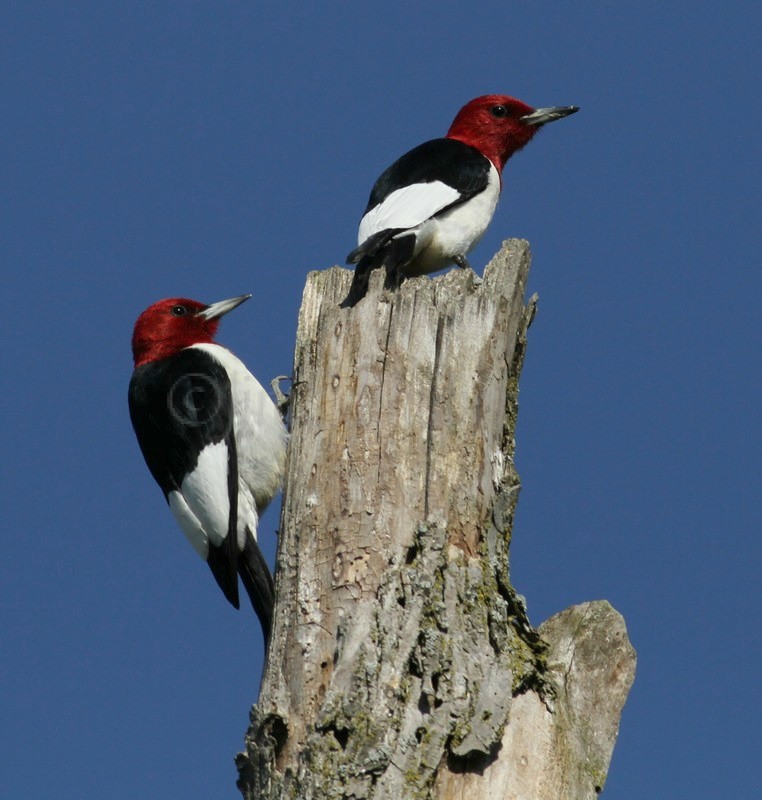
Red-headed Woodpecker
Binomial name: Melanerpes erythrocephalus
Category: Woodpeckers and Allies
Description: Red head with black back and white underparts. The wings are black with white wingtips. Adult males and females have identical plumage (sexually monomorphic).
Size: 7.5″- 9.8″ long, 16.7” wingspan
Weight: 2.0 oz. – 3.4 oz.
Habitat: Deciduous and coniferous forests, orchards, swamps, wetlands, and farmland
Diet: Insects, fruits, berries, nuts, and seeds
Nesting: Nests are built by both partners in cavities of dead trees or utility poles. The males do most of the cavity excavation. Females lay 3 to 10 eggs at one time, up to two broods per season. The first brood is laid in May and incubated for 2 weeks, and hatchlings remain in the nest for 24 to 31 days. Red-headed Woodpeckers often reuse the same nesting cavity year after year.
Notes: The Red-headed Woodpecker stores food, only one of four species in North American known to do so. It may hide nuts, seeds, and insects. In fact, Red-headed Woodpeckers awesome store grasshoppers still alive, stuck in tight crevices or covered with bark. The Red-headed Woodpecker was also featured on a stamp from the United States Postal Service in 1996 and from 1999 – 2006.
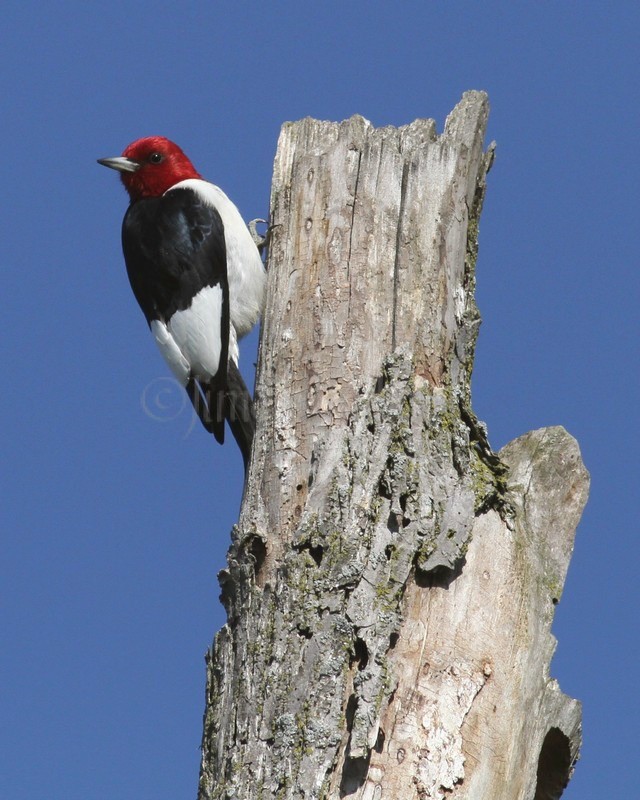
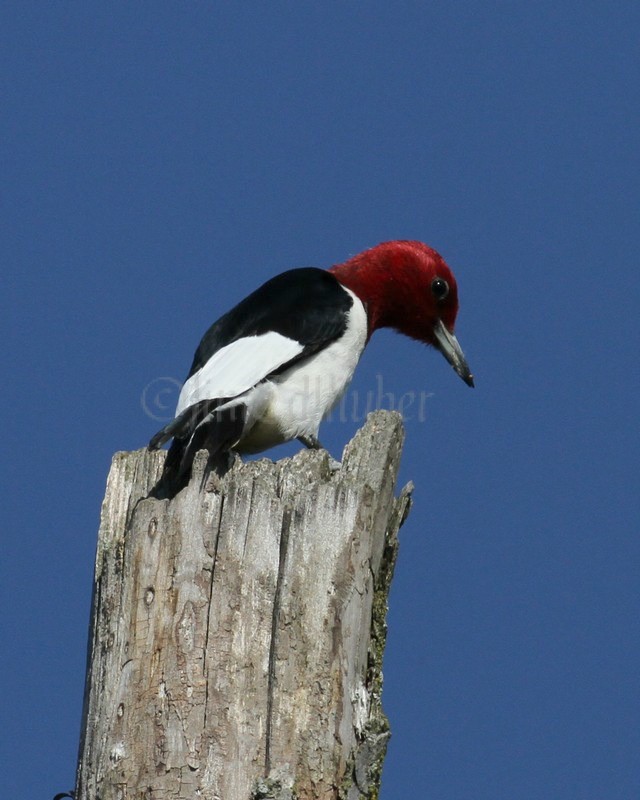
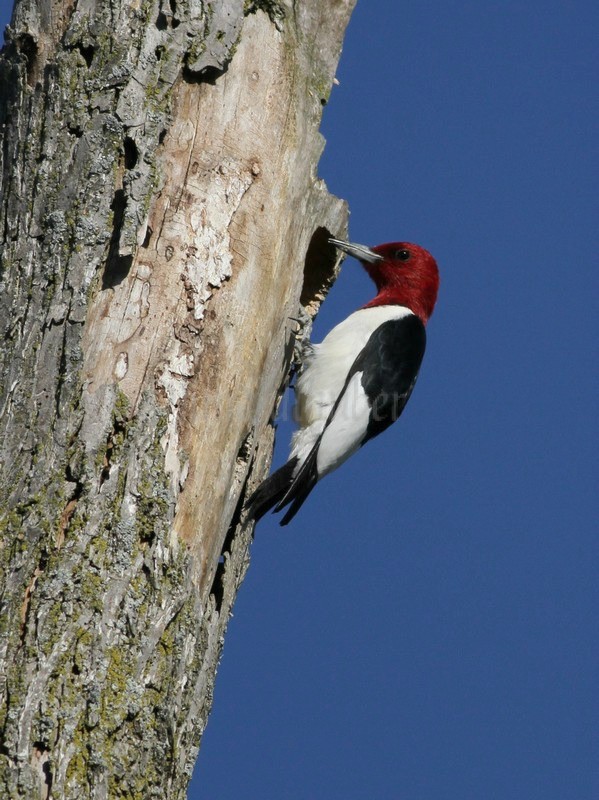
An adult doing some work on the nest hole
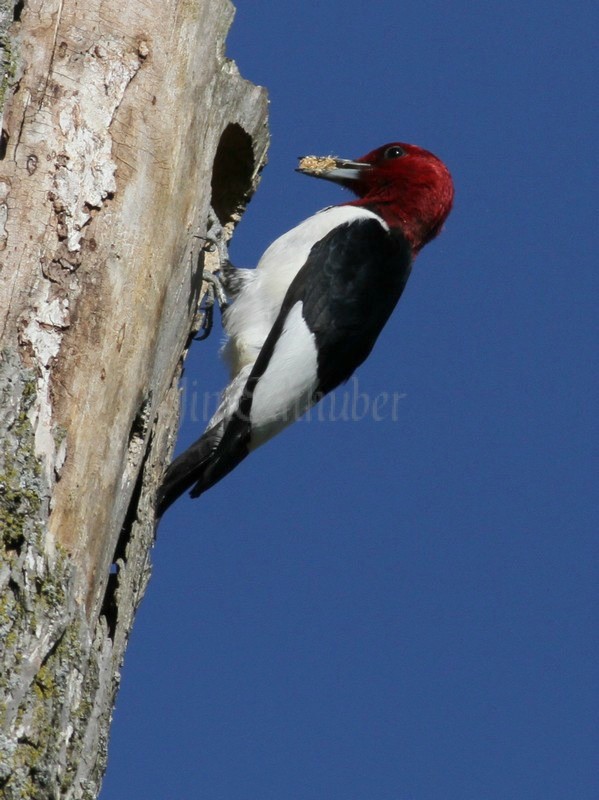
An adult doing some work on the nest hole
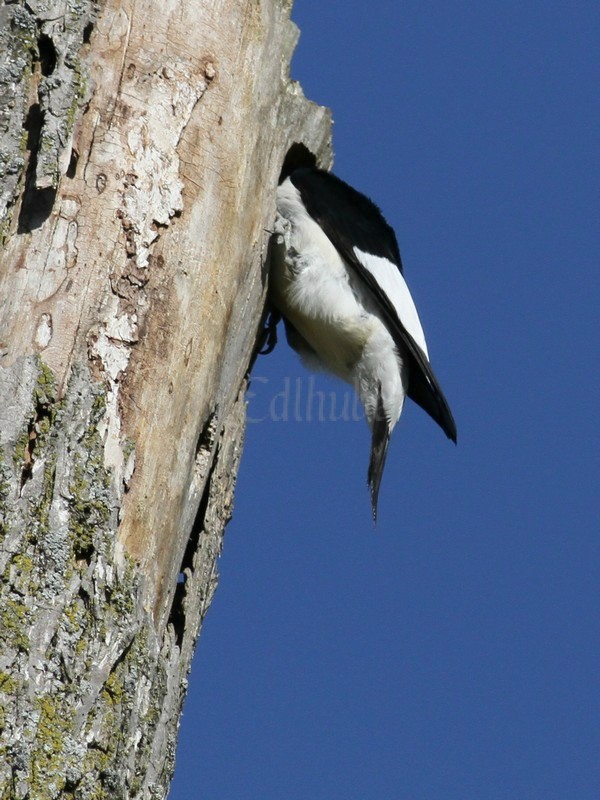
An adult doing some work on the nest hole
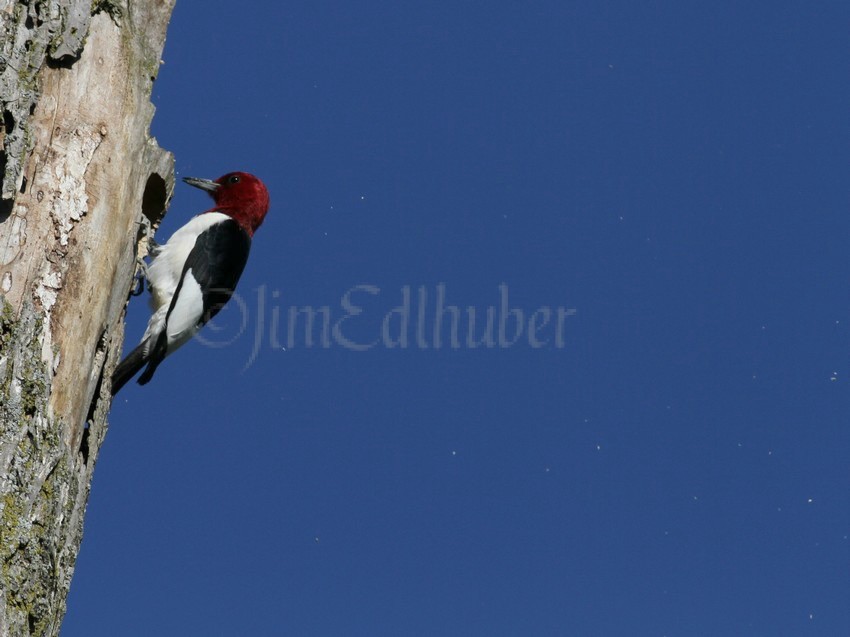
An adult doing some work on the nest hole
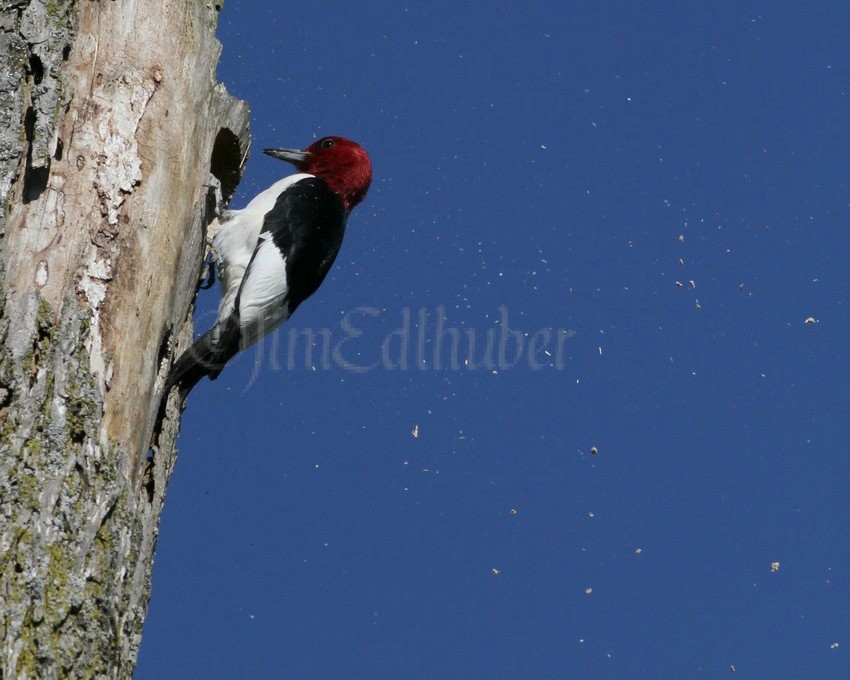
An adult doing some work on the nest hole
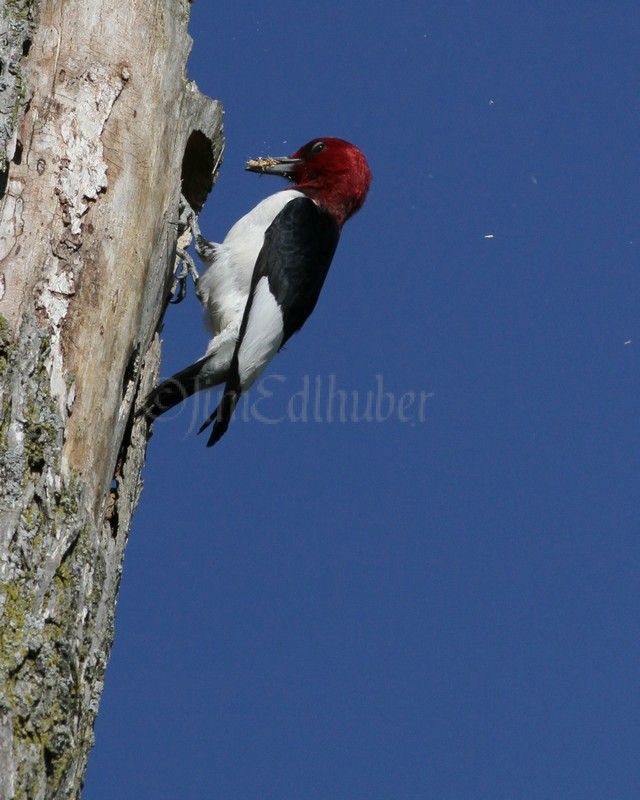
An adult doing some work on the nest hole
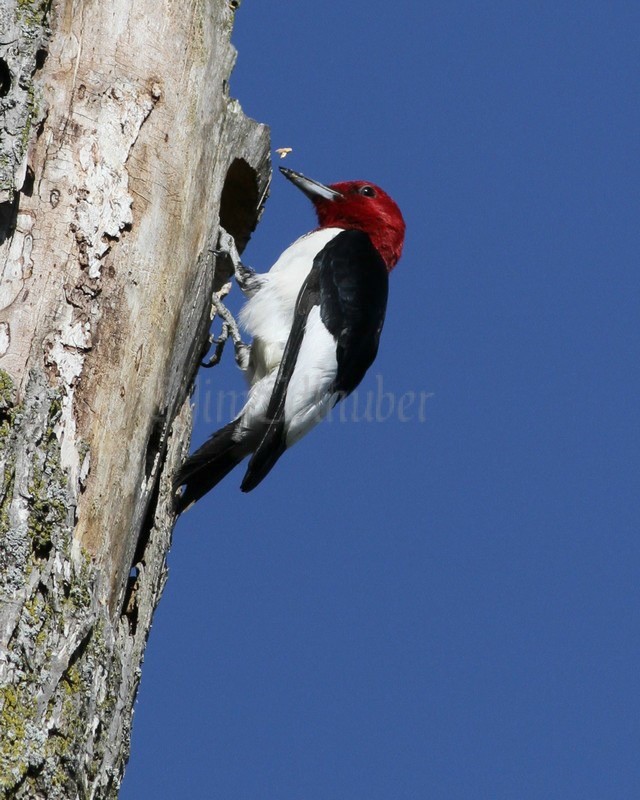
An adult doing some work on the nest hole
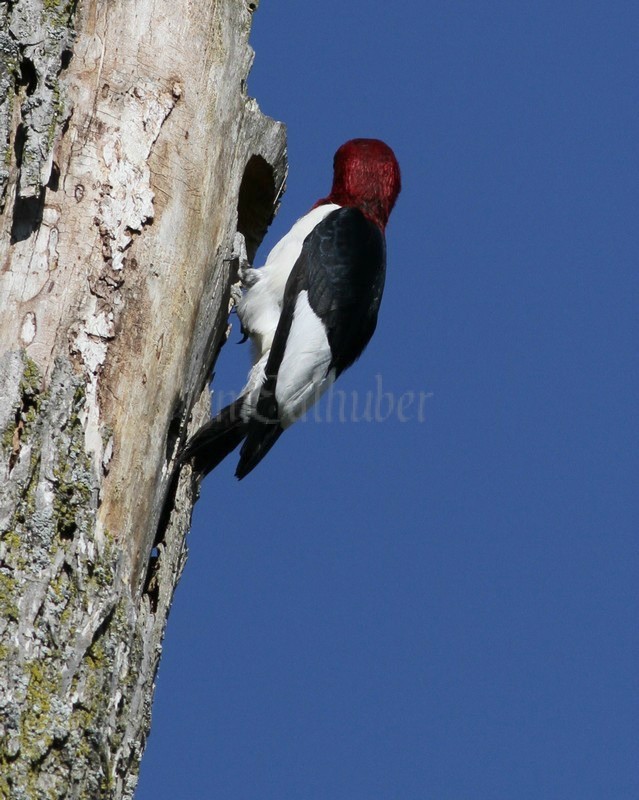
An adult doing some work on the nest hole
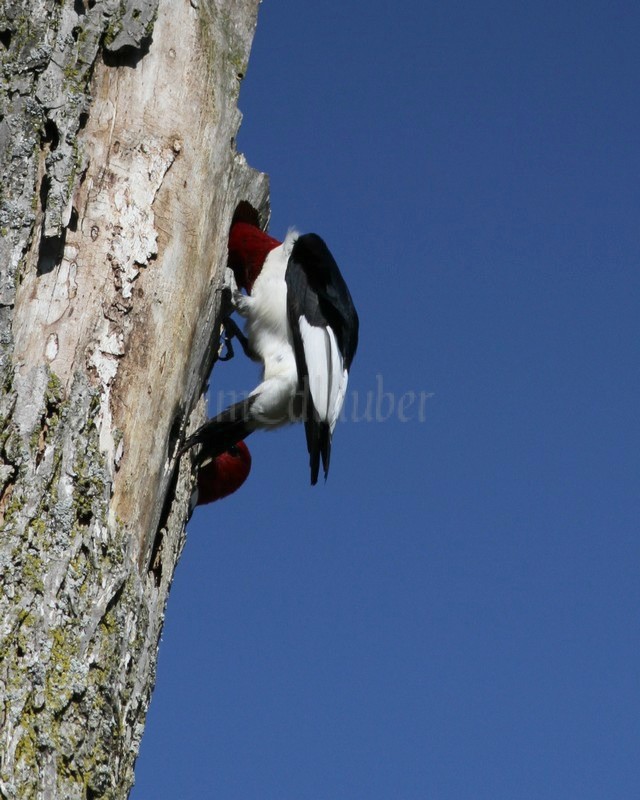
Both adults doing some work on the nest hole
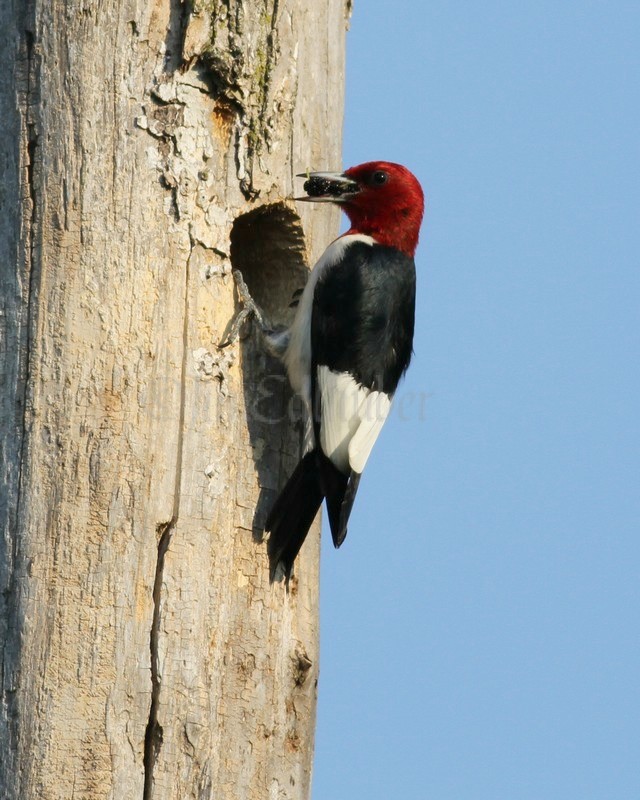
On going adults bring food to the young, different types of food, insects, berries, etc.
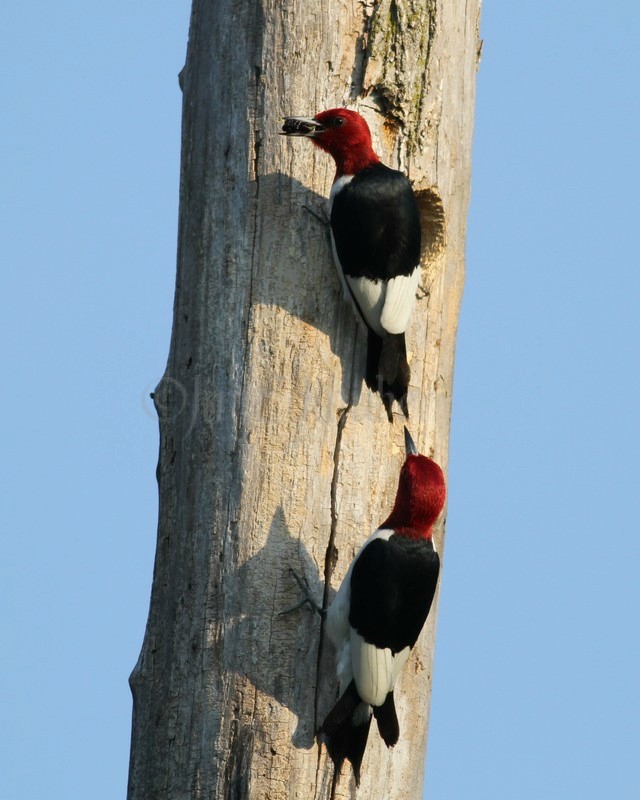
On going adults bring food to the young, different types of food, insects, berries, etc.
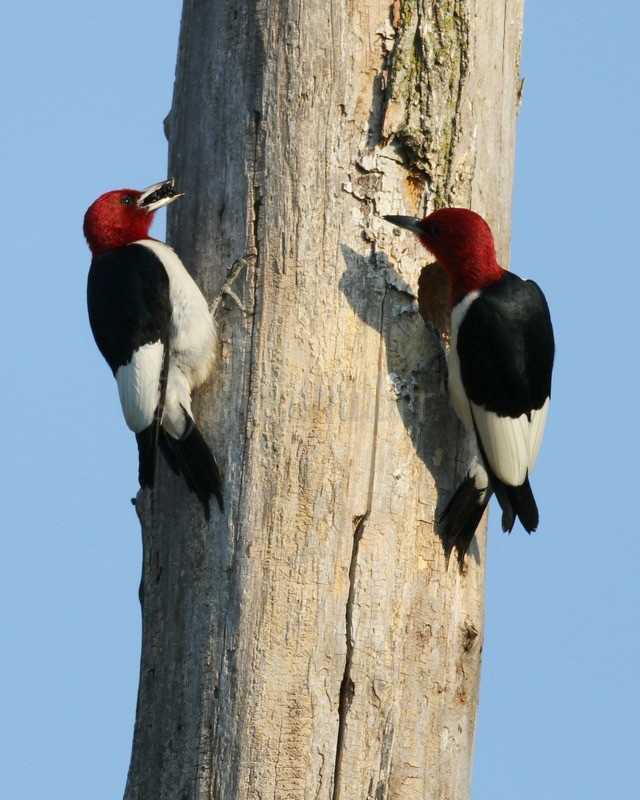
On going adults bring food to the young, different types of food, insects, berries, etc.
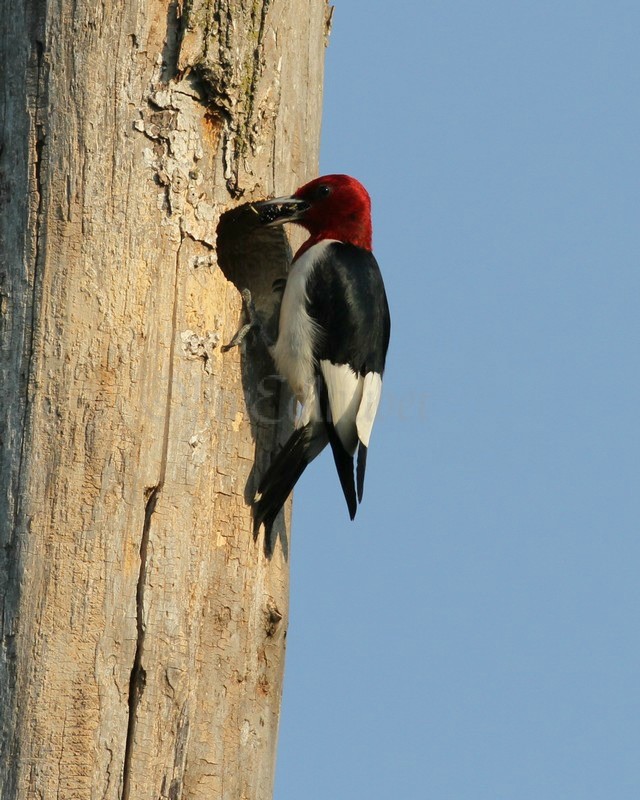
On going adults bring food to the young, different types of food, insects, berries, etc.
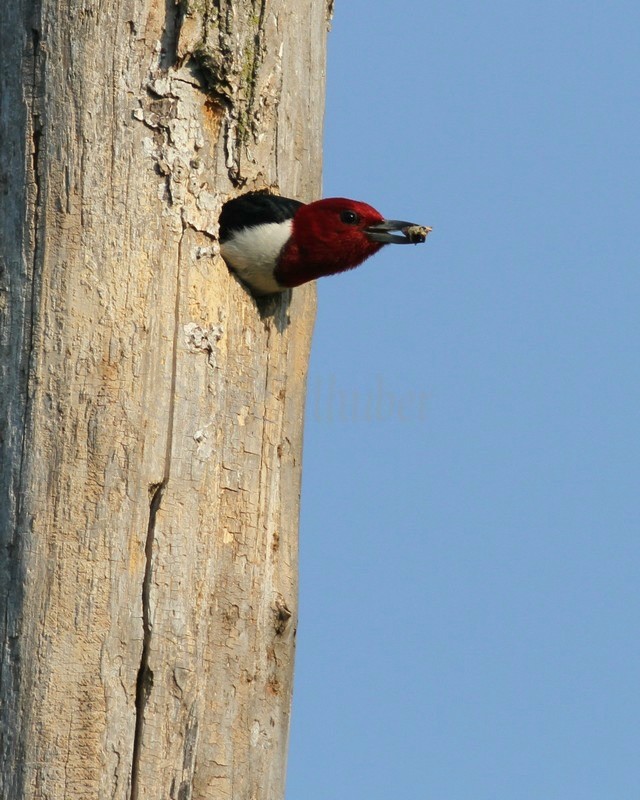
Cleaning out the nest box
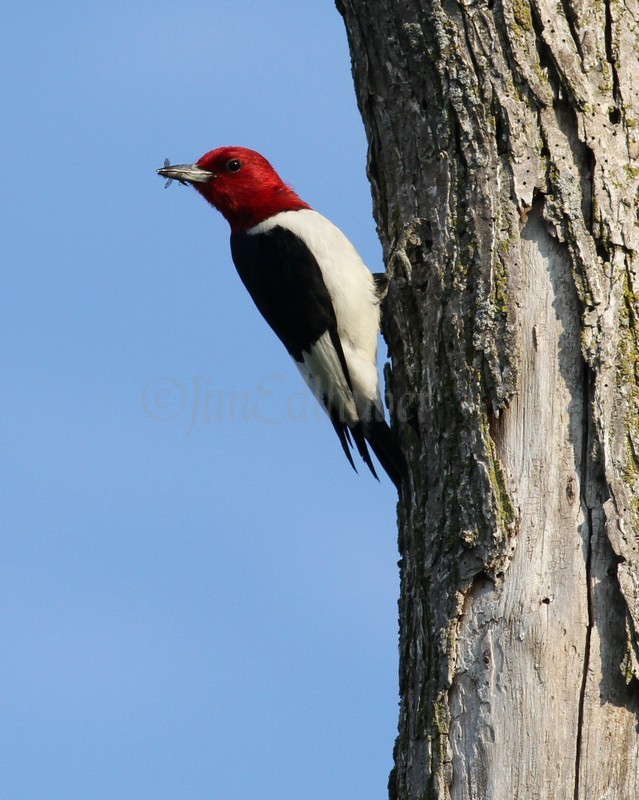
An adult on a near by tree bringing food to the young
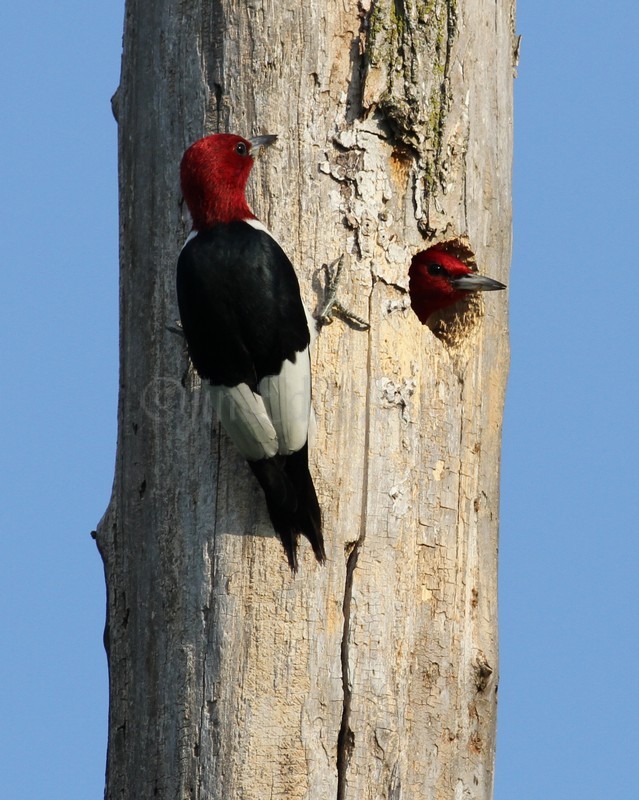
An adult leaving the nest hole, the other adult just close by
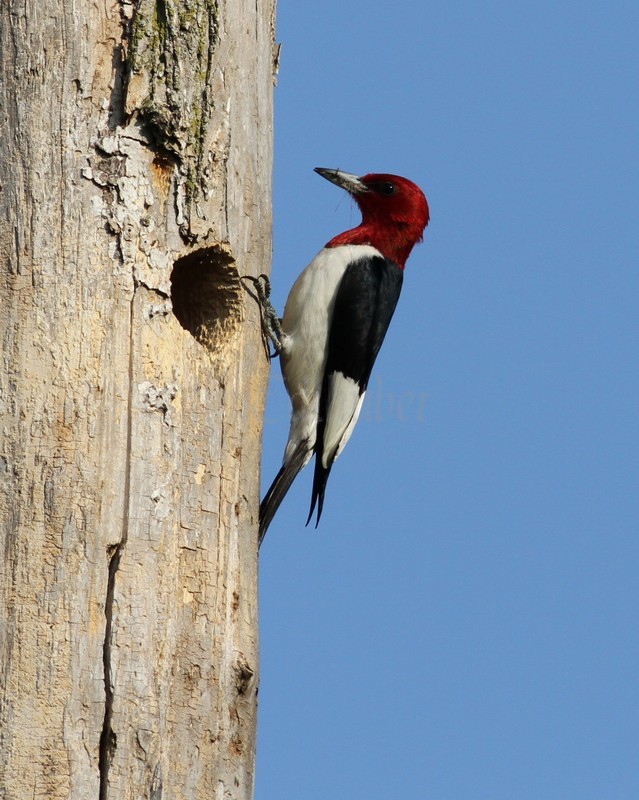
On going adults bring food to the young, different types of food, insects, berries, etc.
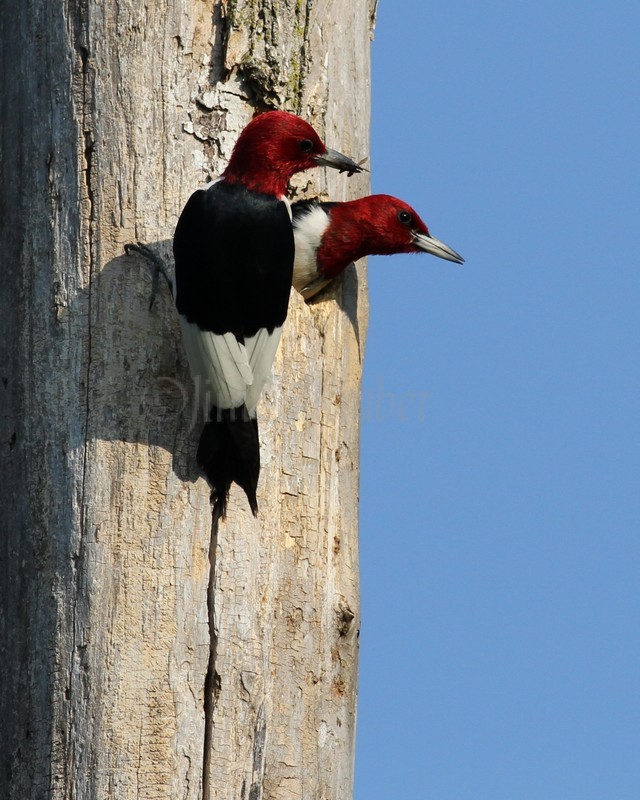
An adult to leave the nest hole while the other adult is ready to bring in the next food for the young
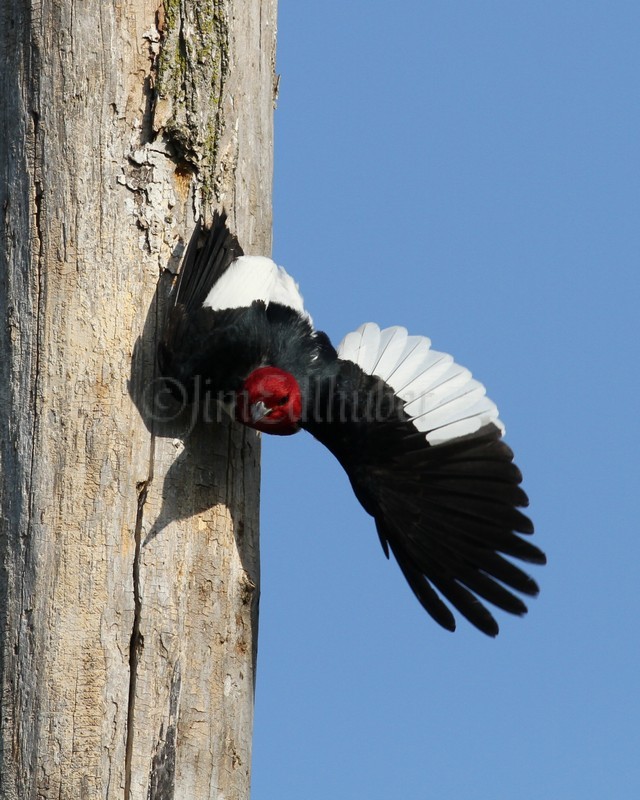
An adult leaving the nest hole after feeding the young
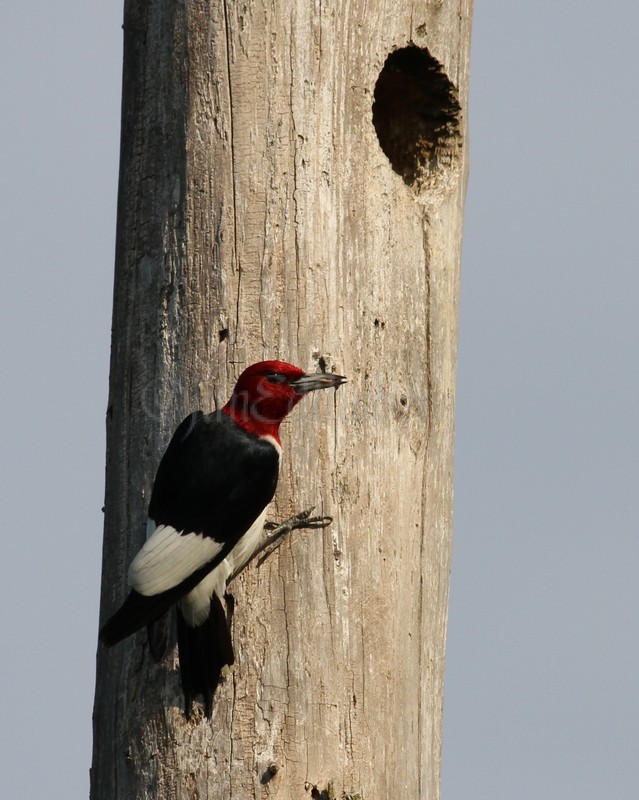
On going adults bring food to the young, different types of food, insects, berries, etc.
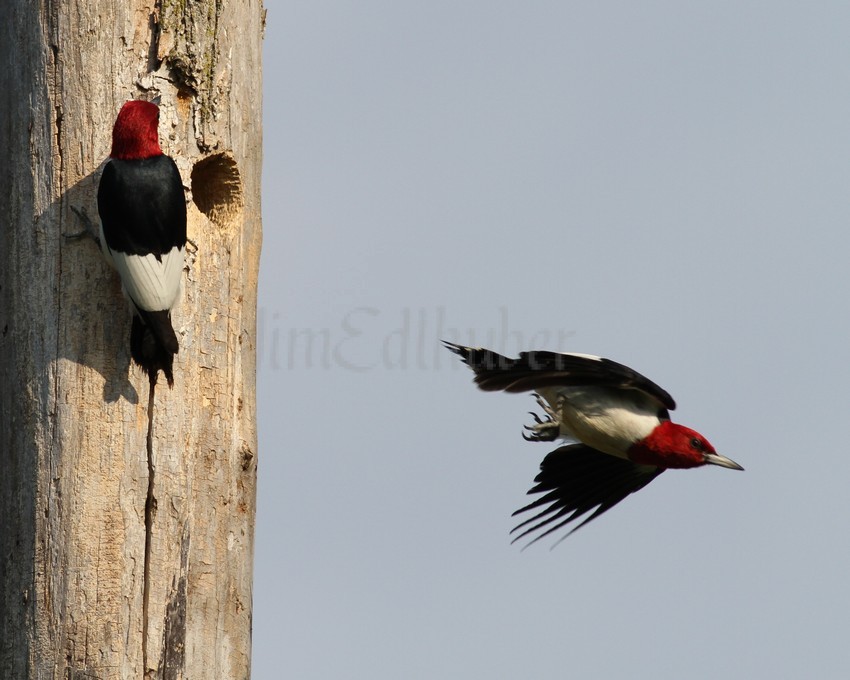
An adult leaving the nest hole after feeding the young
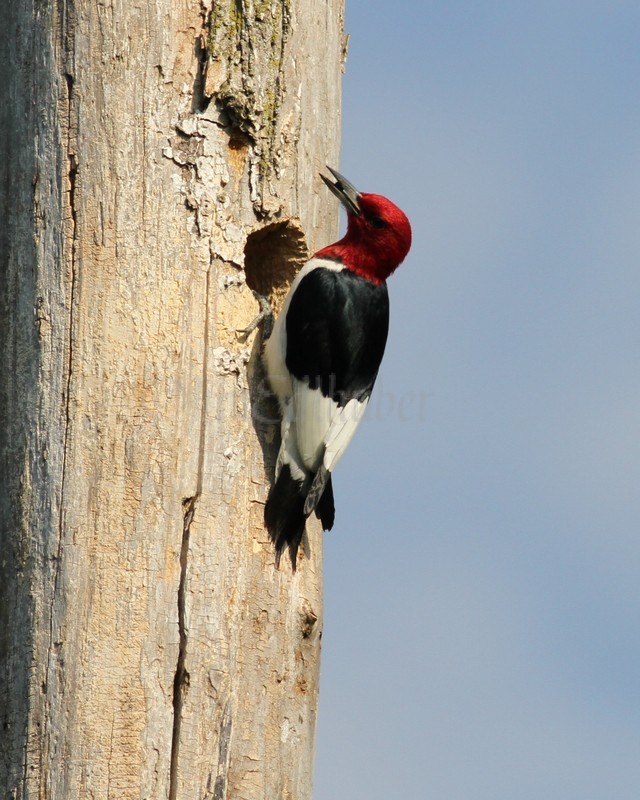
On going adults bring food to the young, different types of food, insects, berries, etc.
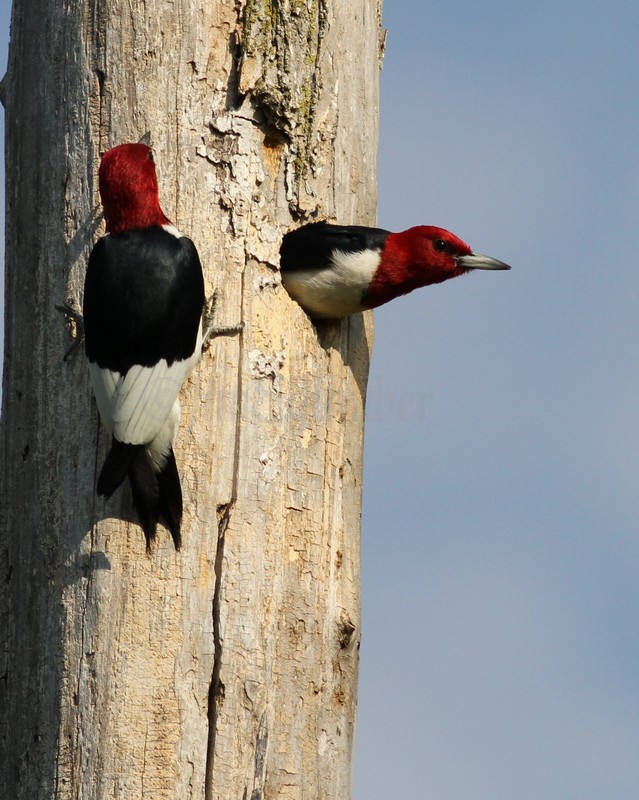
An adult leaving the nest hole after feeding the young
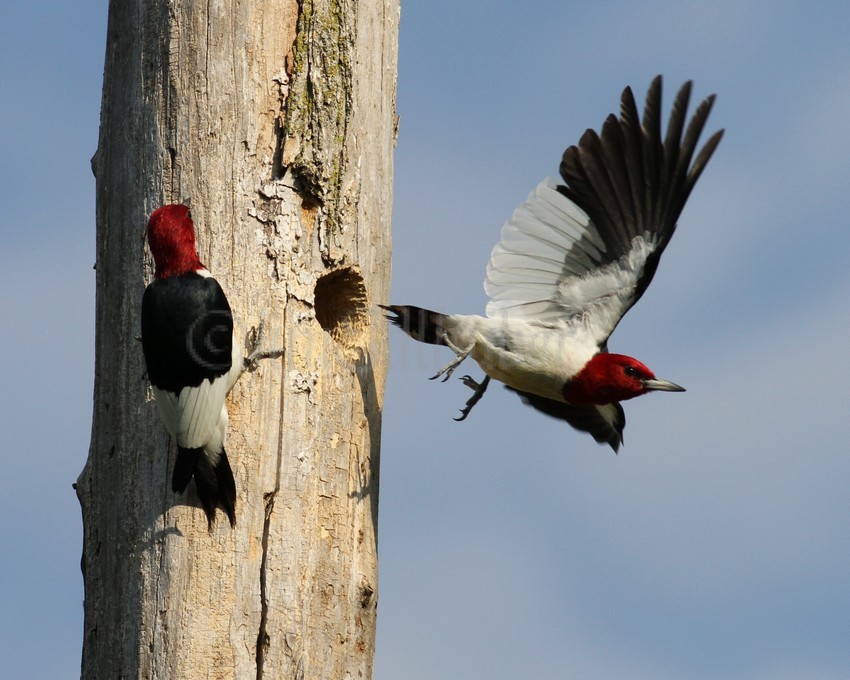
An adult leaving the nest hole after feeding the young
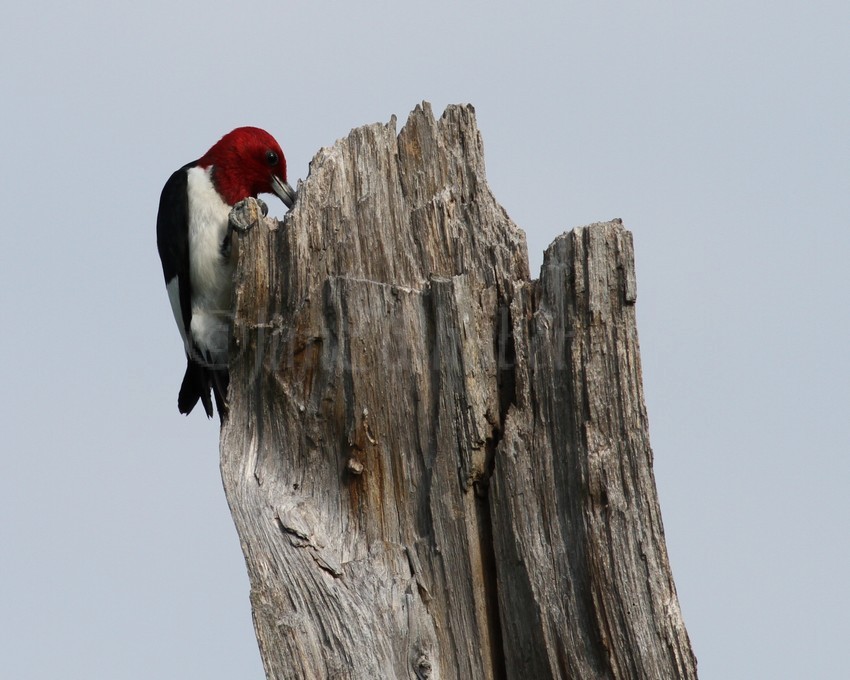
An adult storing some food on a nearby tree
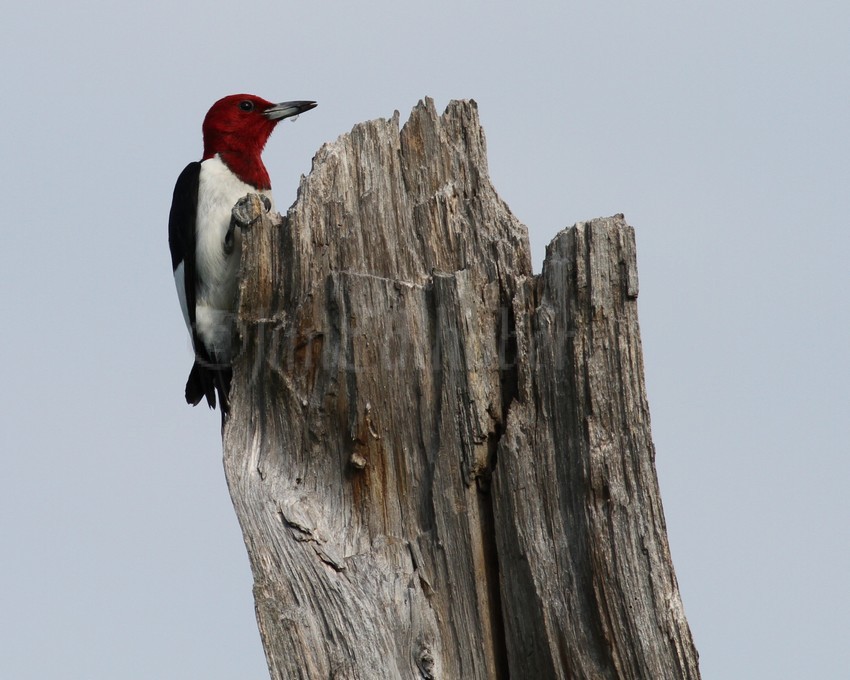
An adult storing some food on a nearby tree
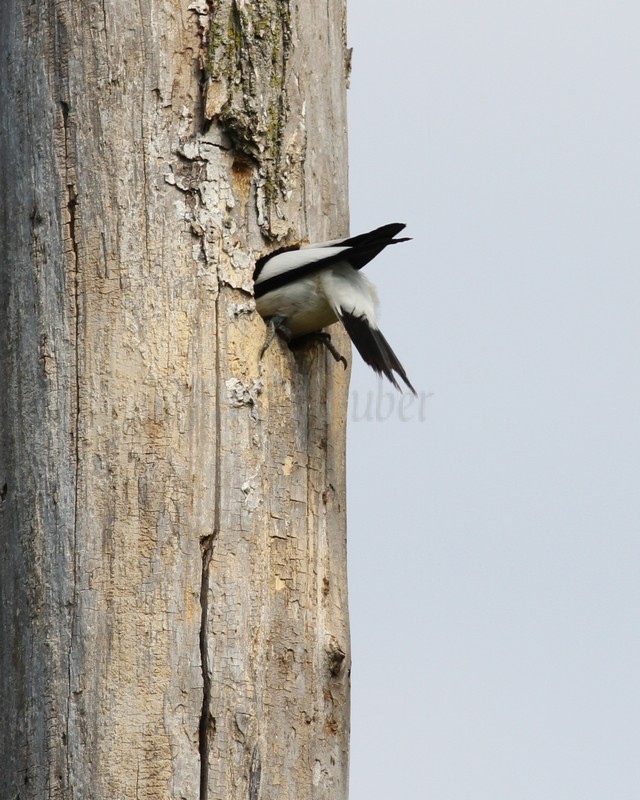
An adult feeding the young
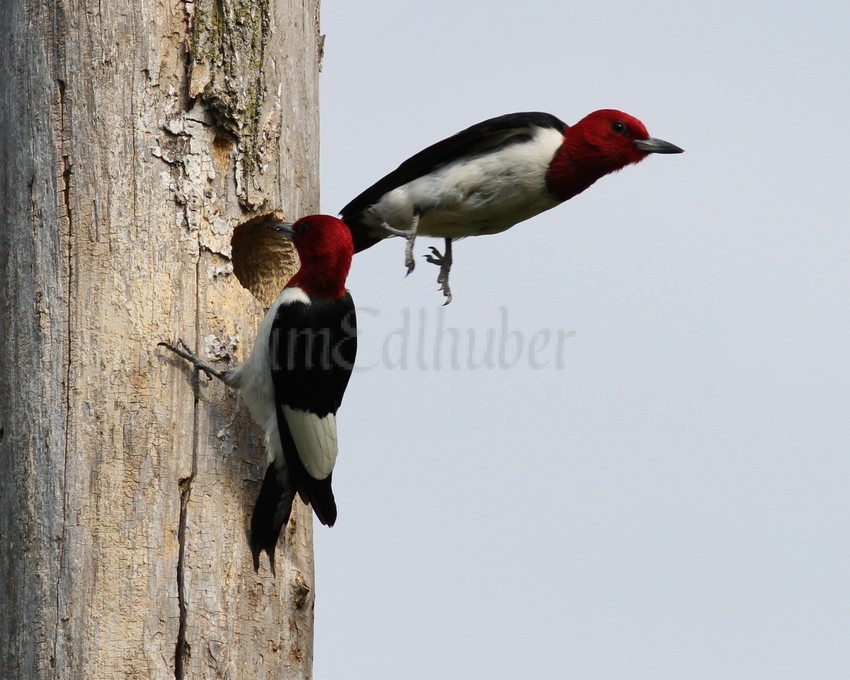
An adult leaving the nest hole after feeding the young
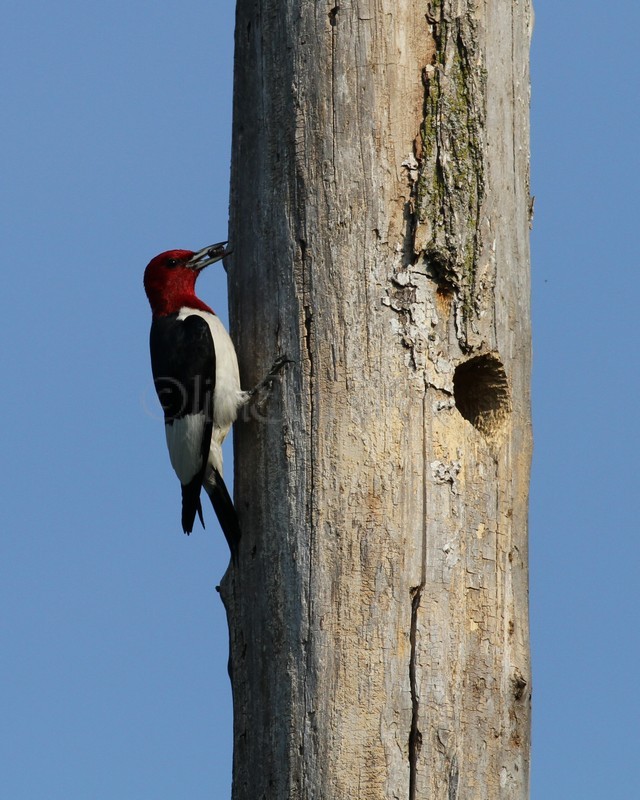
On going adults bring food to the young, different types of food, insects, berries, etc.
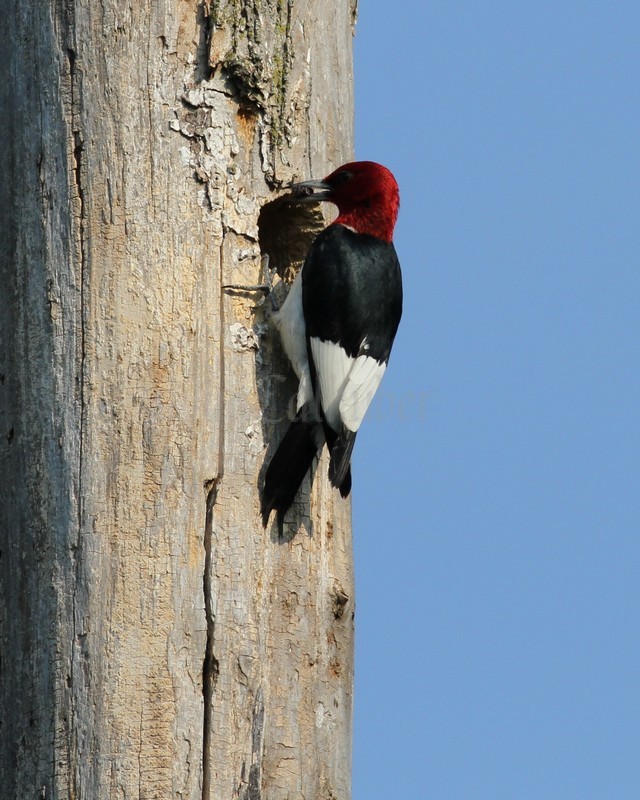
On going adults bring food to the young, different types of food, insects, berries, etc.
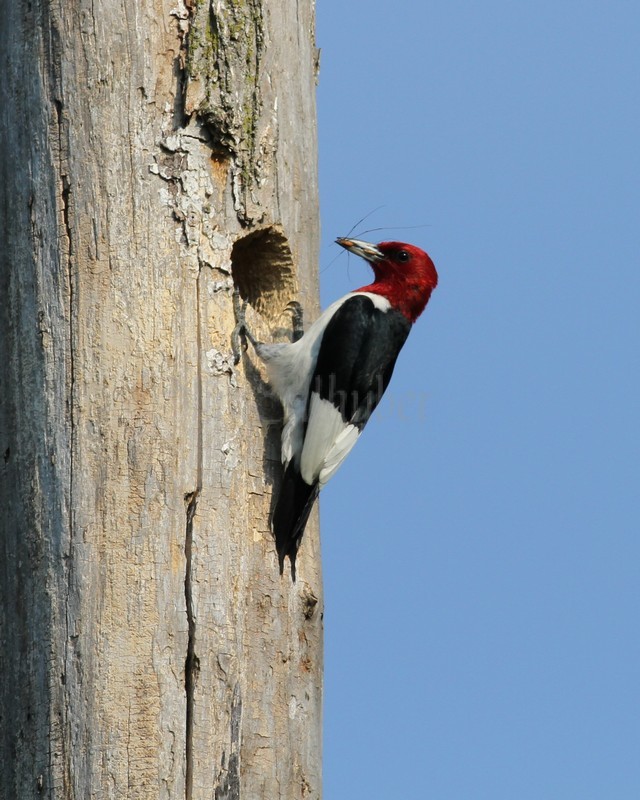
On going adults bring food to the young, different types of food, insects, berries, etc.
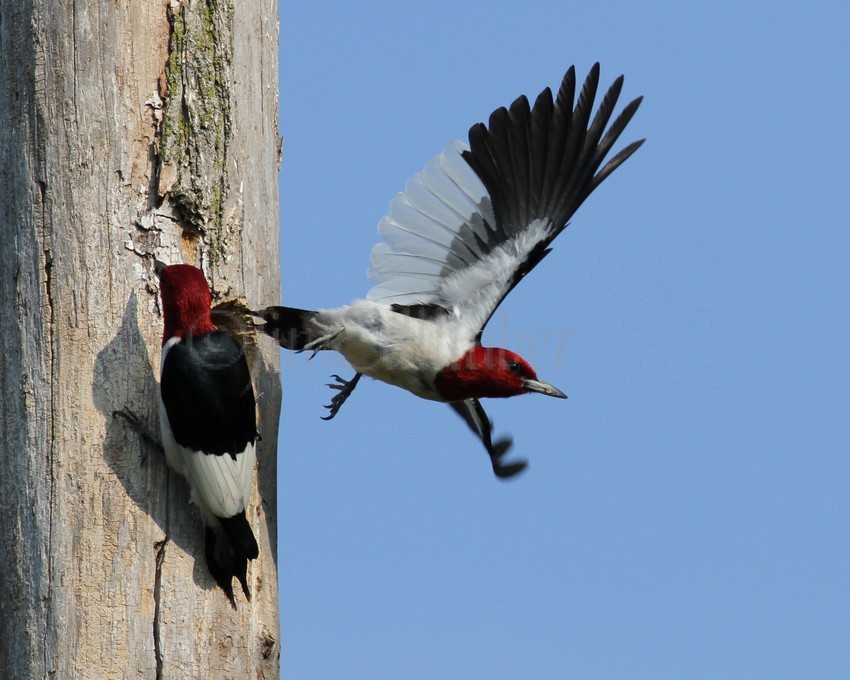
An adult leaving the nest hole after feeding the young
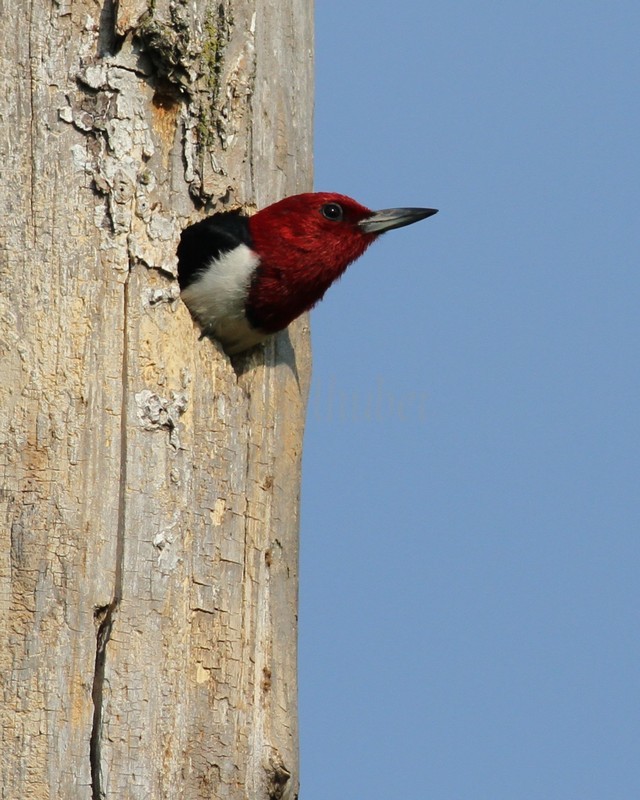
An adult just before leaving the nest after bringing food to the young
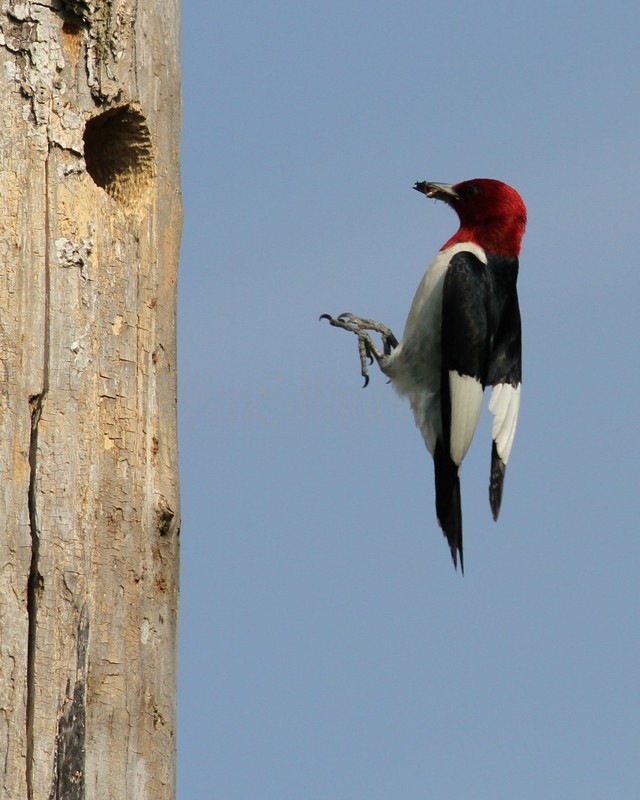
An adult just before landing at the nest hole with food for the young
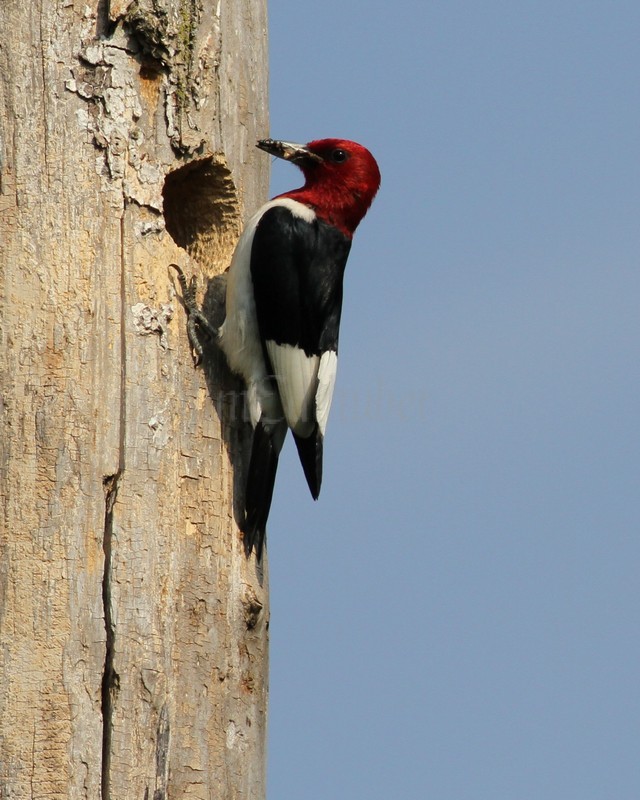
On going adults bring food to the young, different types of food, insects, berries, etc.
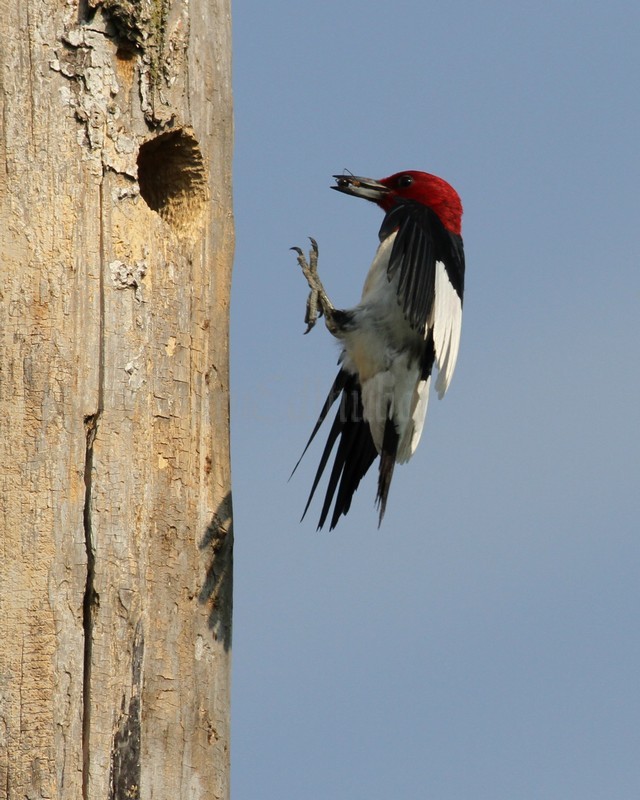
An adult just before landing at the nest hole with food for the young
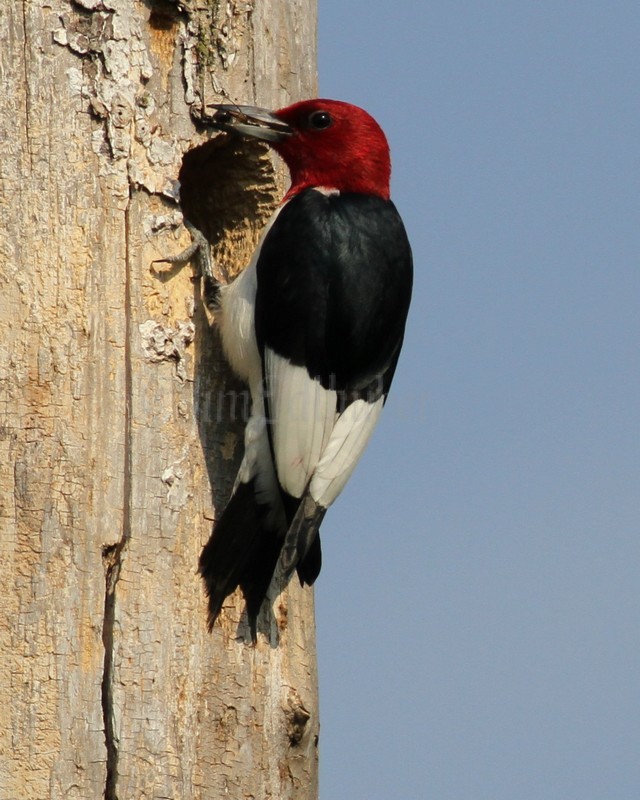
On going adults bring food to the young, different types of food, insects, berries, etc.
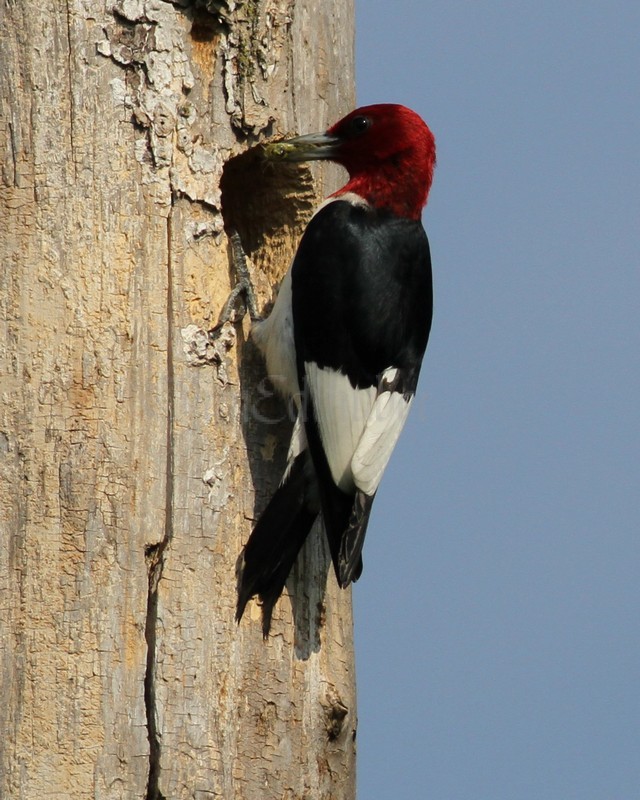
On going adults bring food to the young, different types of food, insects, berries, etc.
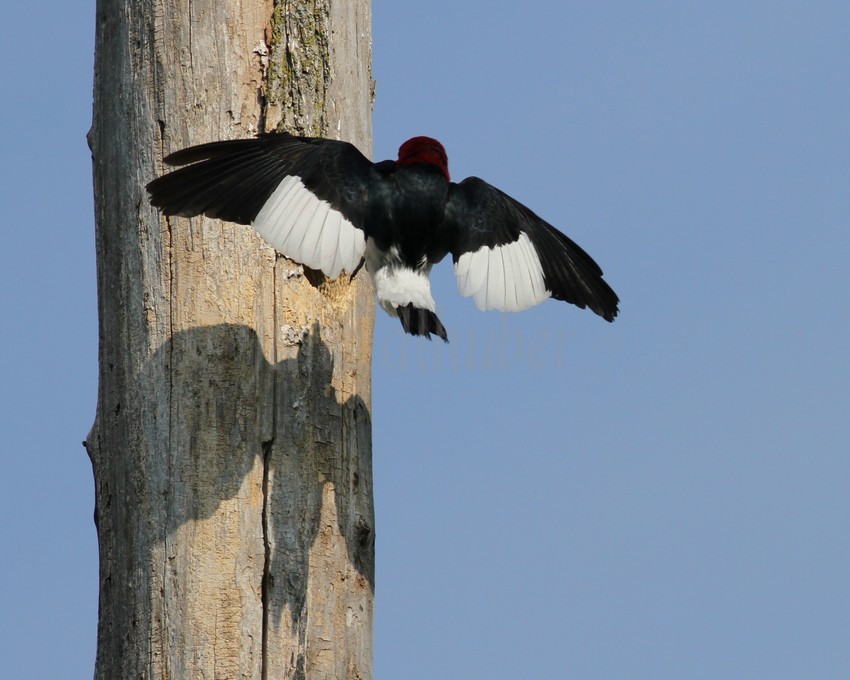
An adult just before landing at the nest hole with food for the young
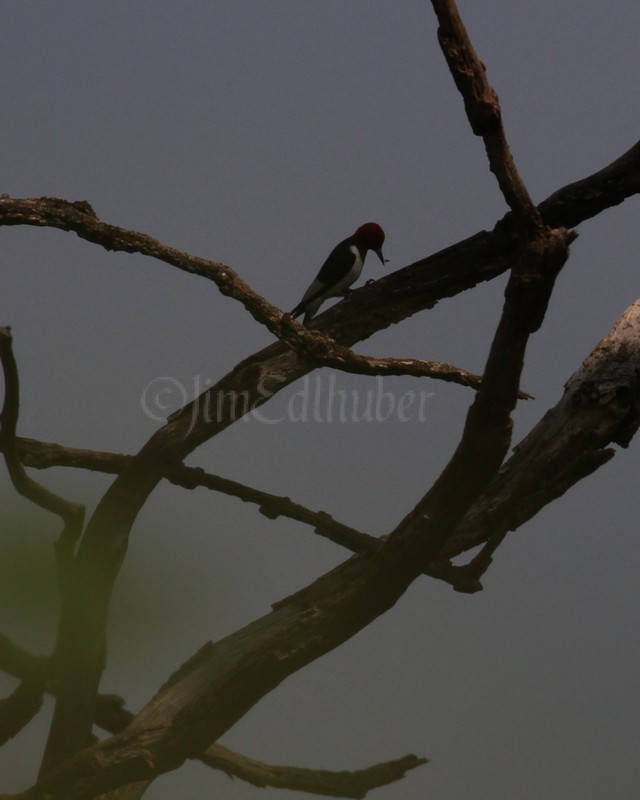
An adult off in a distance from the nest. This happens sometimes as they prepare the food before bringing it into the nest hole to eat. It may be compacted some what of whatever the bird does at this time in preparation
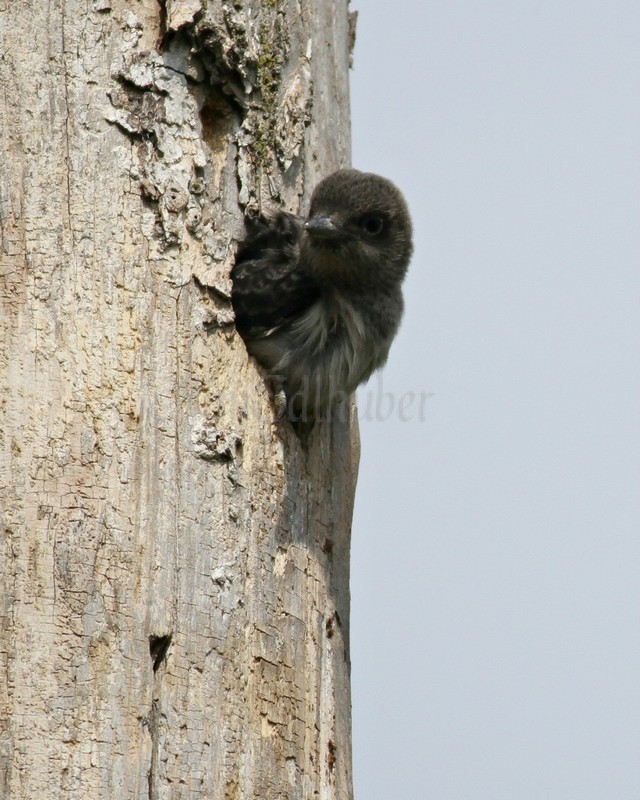
A young Red-headed Woodpecker sticks its head out of the nest hole waiting for an adult to bring in the next food
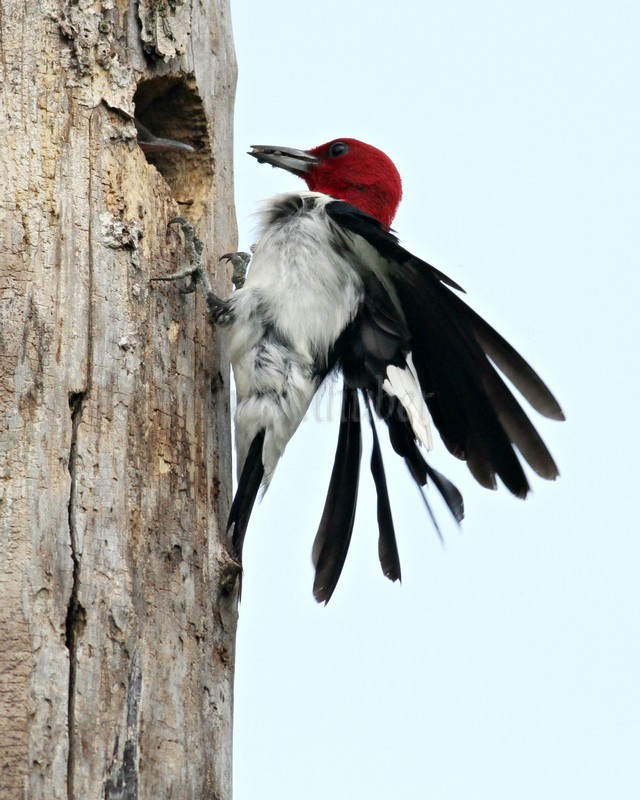
Adult bringing food to the young. As I noted, the adults draw the young closer to the nest hole opening till they are just about out of the hole to get the food
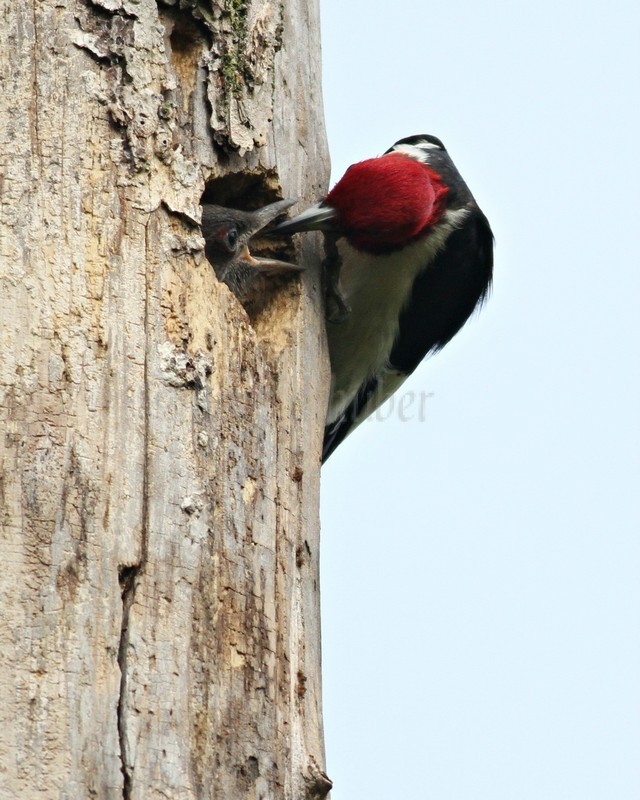
Adult bringing food to the young. As I noted, the adults draw the young closer to the nest hole opening till they are just about out of the hole to get the food
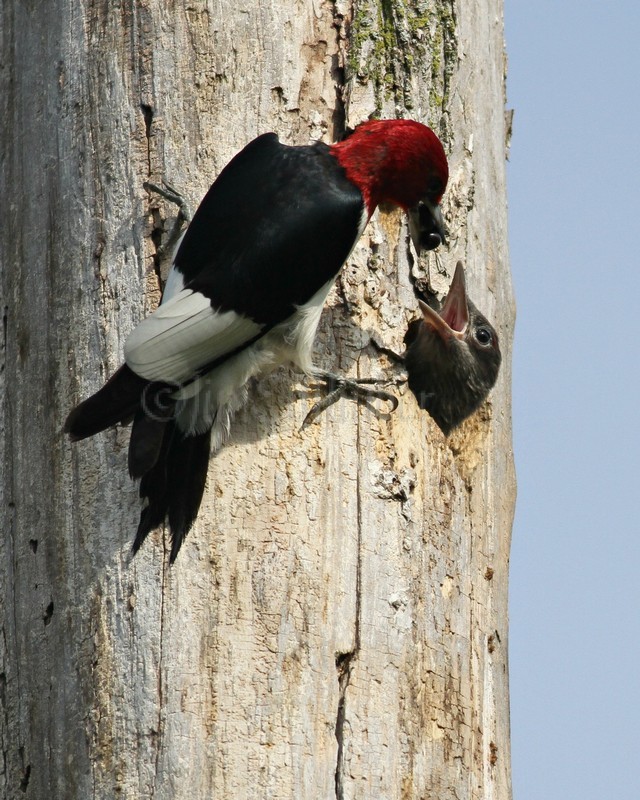
Adult bringing food to the young. As I noted, the adults draw the young closer to the nest hole opening till they are just about out of the hole to get the food
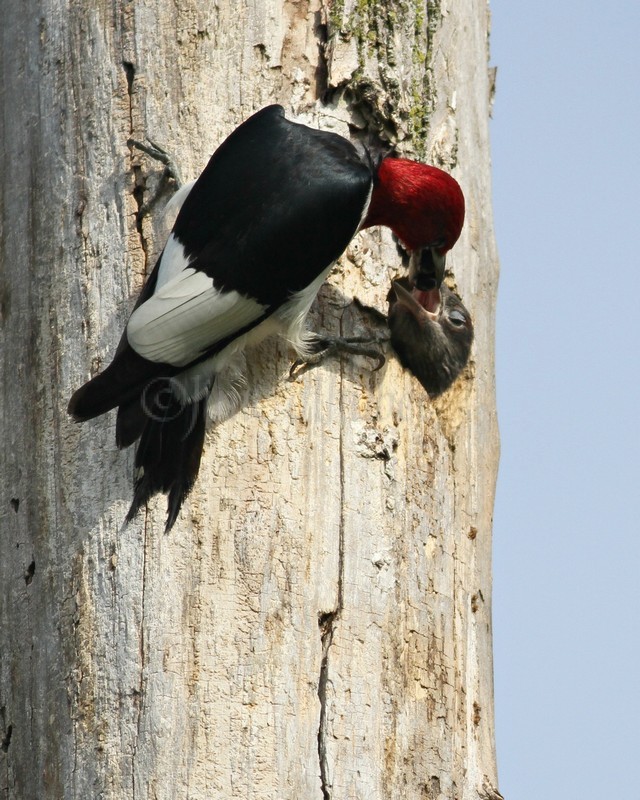
Adult bringing food to the young. As I noted, the adults draw the young closer to the nest hole opening till they are just about out of the hole to get the food
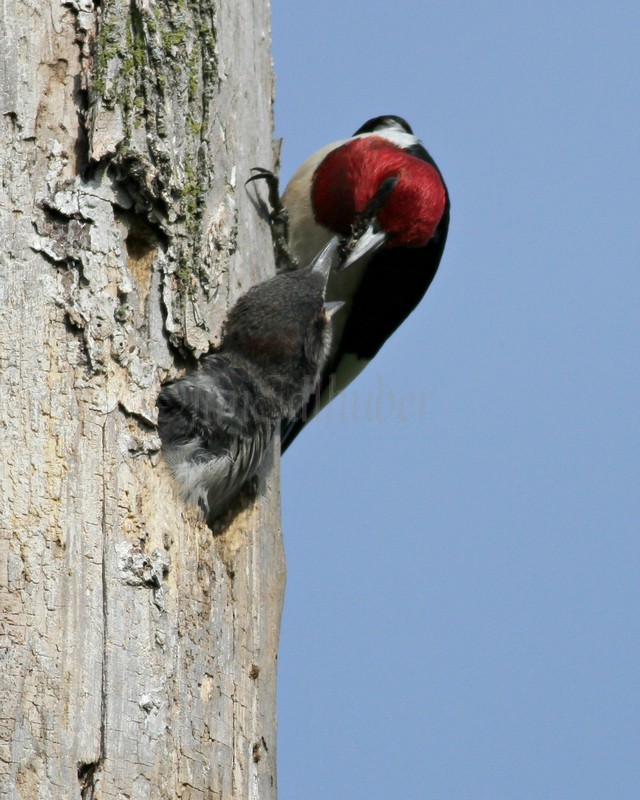
Adult bringing food to the young. As I noted, the adults draw the young closer to the nest hole opening till they are just about out of the hole to get the food
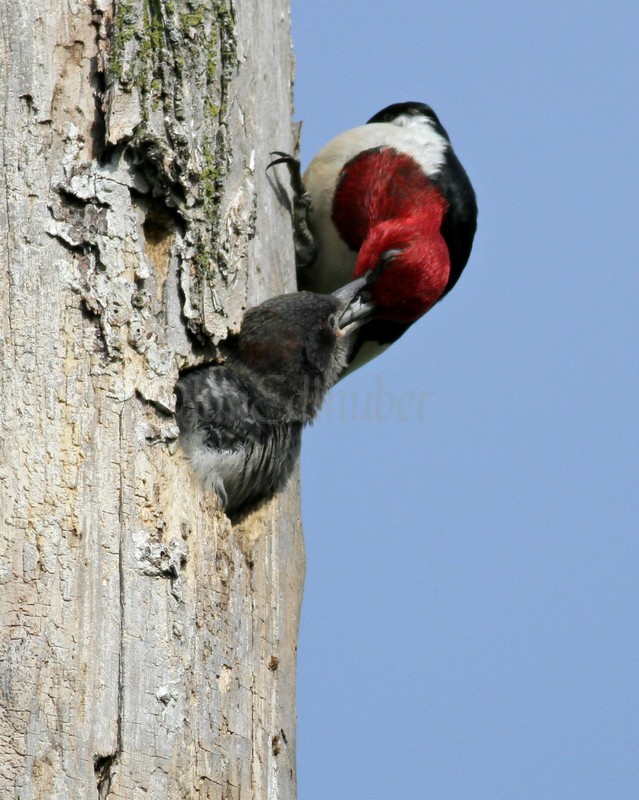
Adult bringing food to the young. As I noted, the adults draw the young closer to the nest hole opening till they are just about out of the hole to get the food
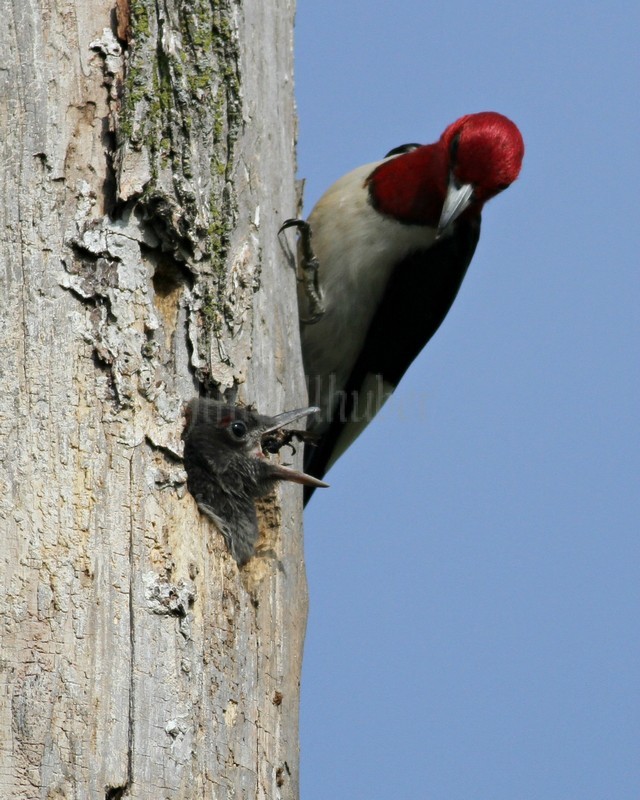
Adult bringing food to the young. As I noted, the adults draw the young closer to the nest hole opening till they are just about out of the hole to get the food
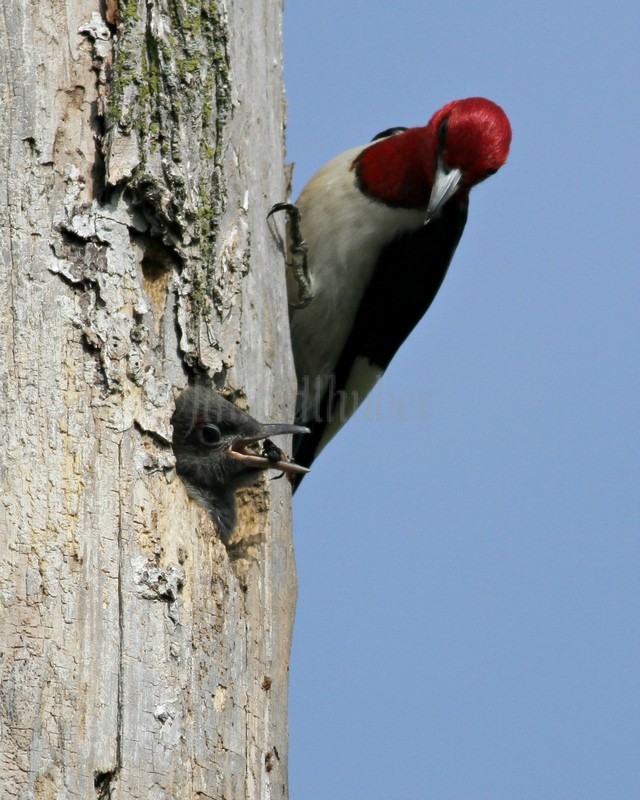
Adult bringing food to the young. As I noted, the adults draw the young closer to the nest hole opening till they are just about out of the hole to get the food
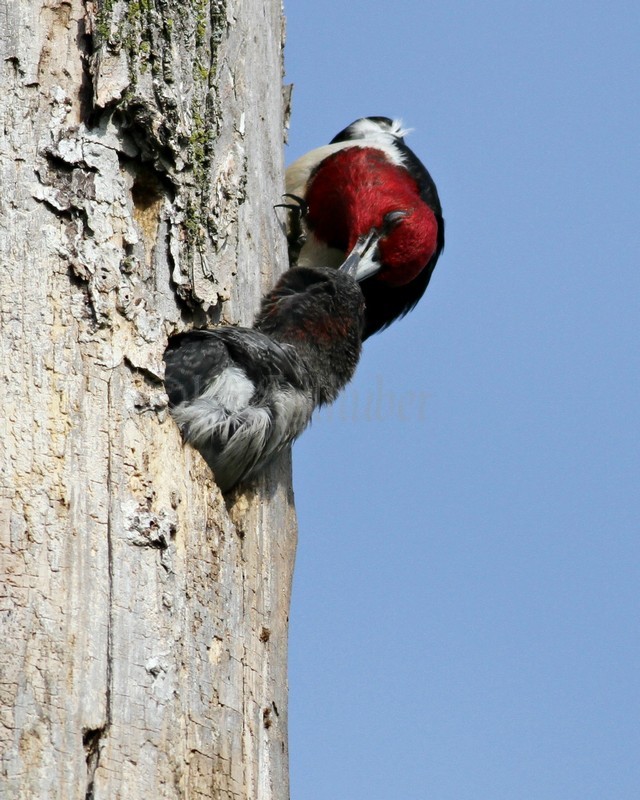
Adult bringing food to the young. As I noted, the adults draw the young closer to the nest hole opening till they are just about out of the hole to get the food. This bird is showing some for the red on the back of the head already
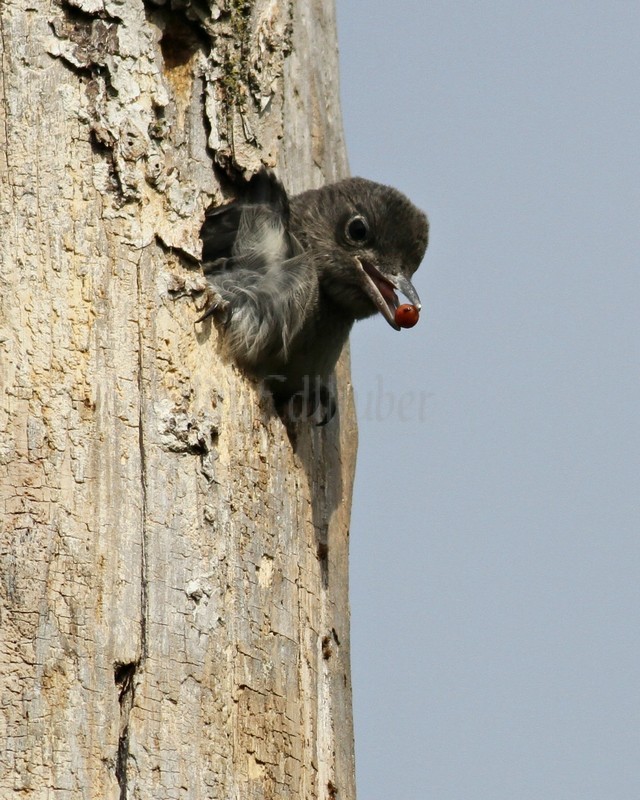
a young Red-headed Woodpecker with a berry in its bill
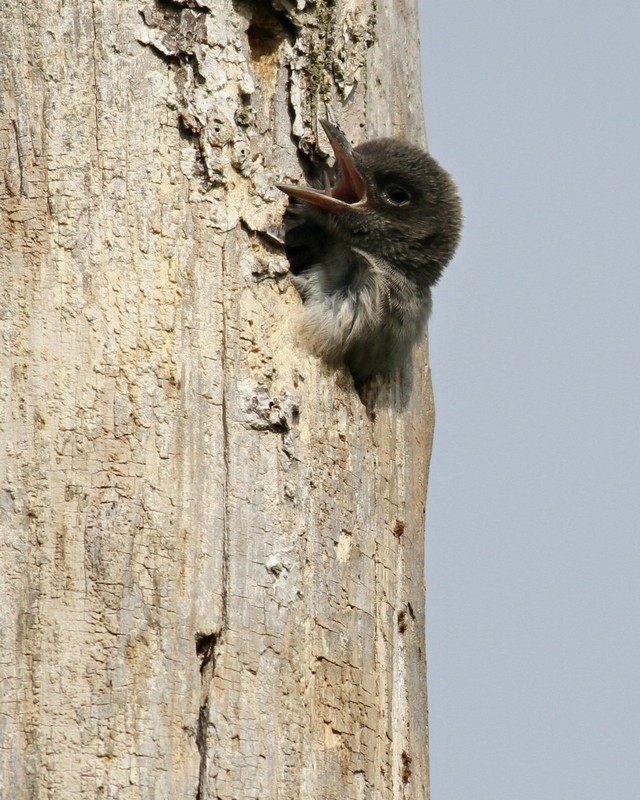
A young Red-headed Woodpecker sticks its head out of the nest hole waiting for an adult to bring in the next food
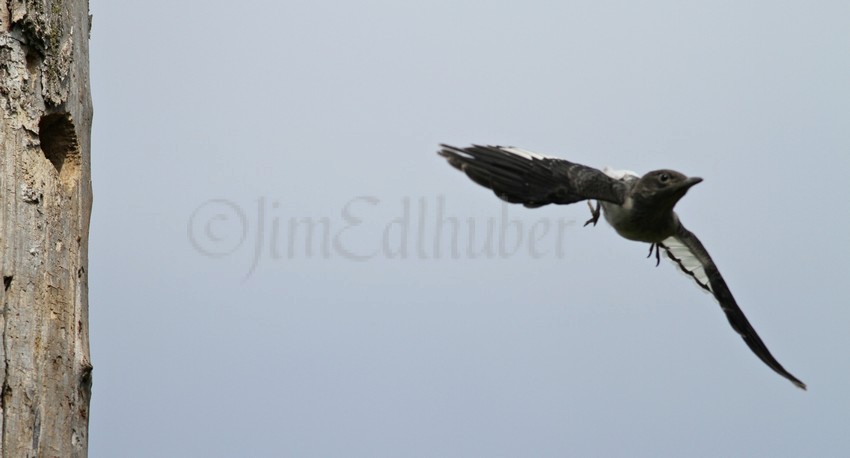
The maiden flight for this young Red-headed Woodpecker leaving the nest. It was one of 2 birds that left the nest that day
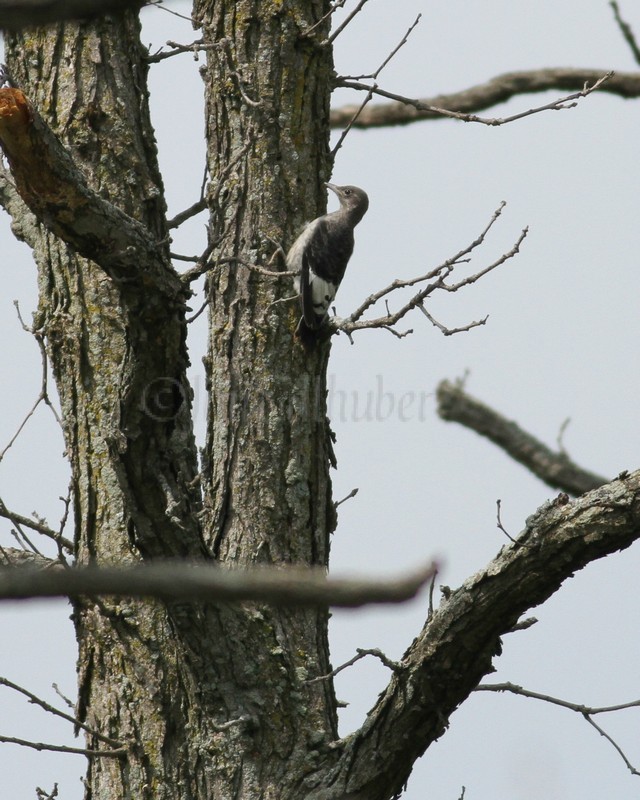
Young Red-headed Woodpecker off in a distance in some near by oaks after it left the nest. Already eating something here
